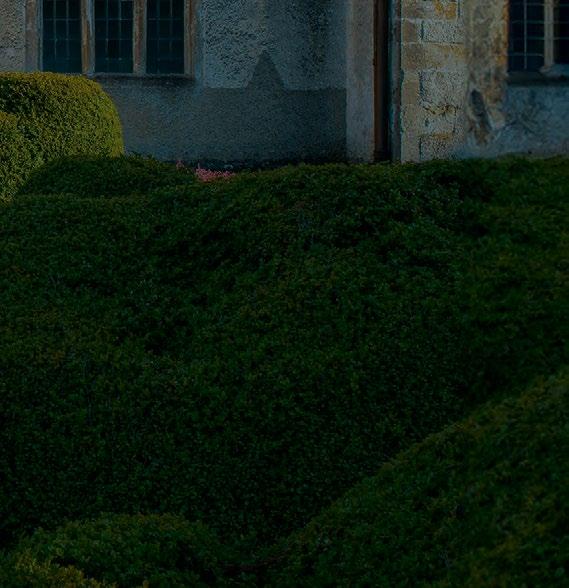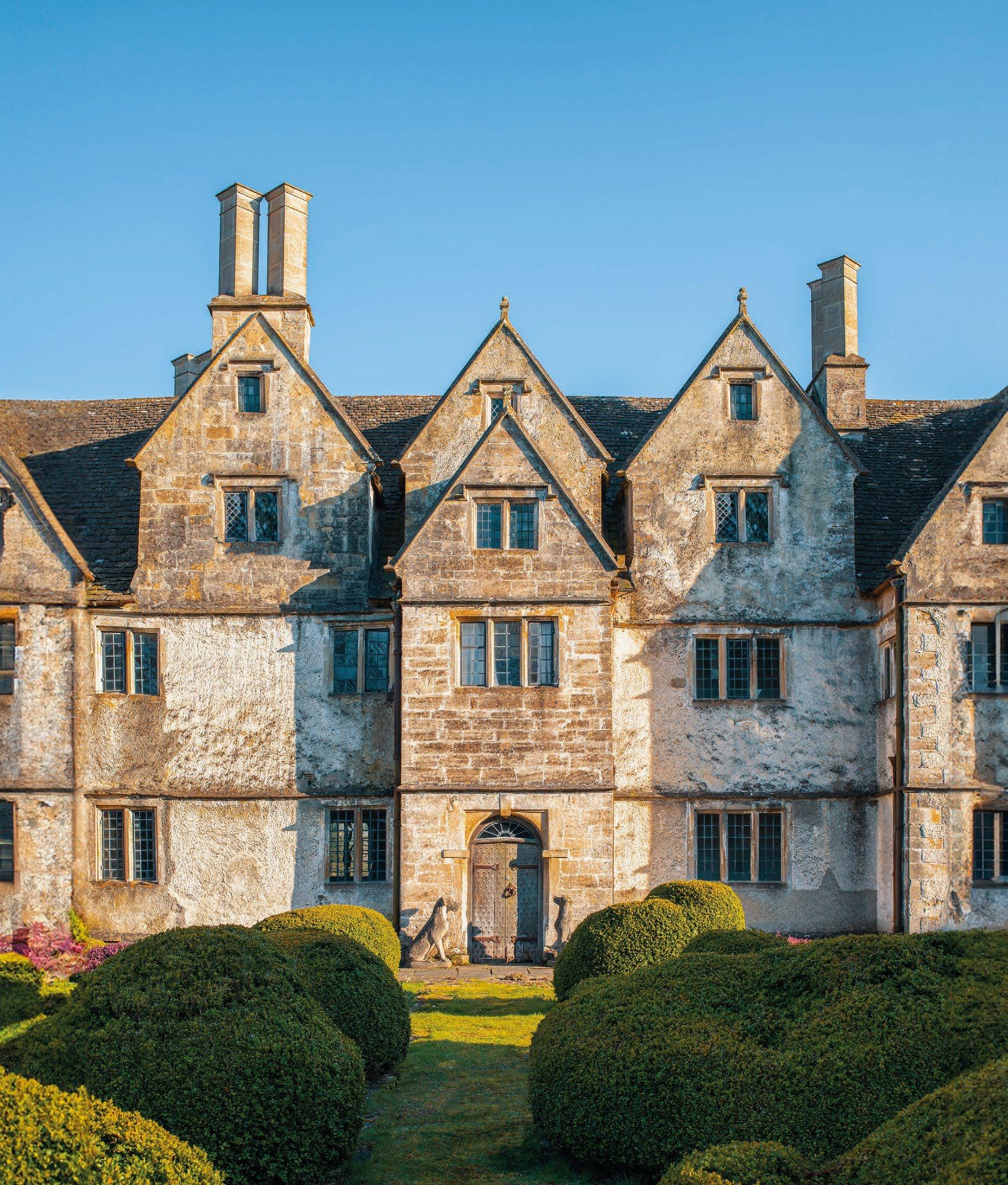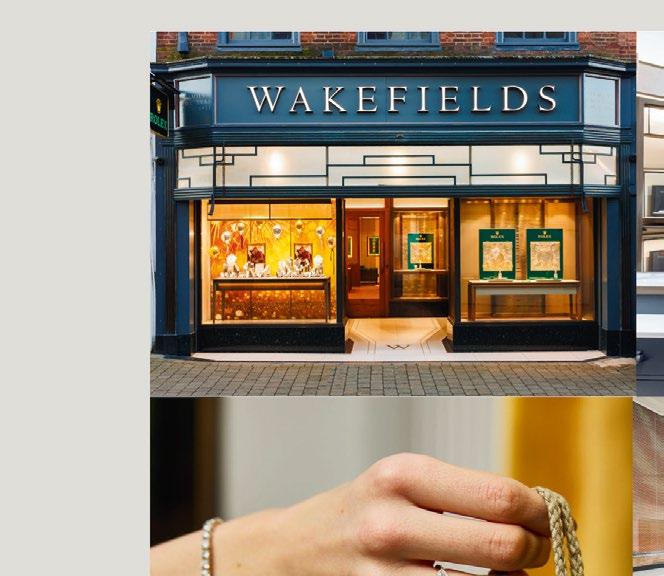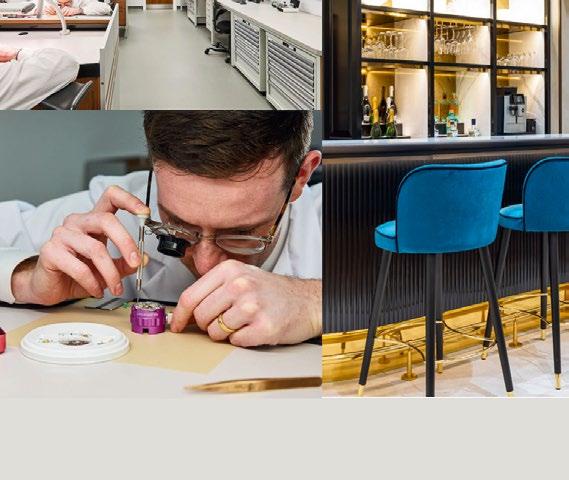ELITE MAGAZINE

WITH COMPLIMENTS
SPRING/SUMMER 2025




WITH COMPLIMENTS
SPRING/SUMMER 2025


A warm welcome to the spring/summer issue of Elite Magazine, curated exclusively for you, our valued guests and friends
In welcoming you all it is also my pleasure to welcome the longer days and warmer evenings of the great British summer to our hotels.
I’d like to start by extending my heartfelt gratitude to our guests and team members who helped raise over £11,000 for our charity of the year, Hearing Dogs for Deaf People. Through our fundraising events, including cake sales and sponsored walks, and our doggy breaks and ‘paw-tatoes’ menu side-dish, we have made a very real impact for this important charity. Whilst our 12 months of dedicated activity has come to an end, Hearing Dogs for Deaf People continues to have the support of the Rotherwick Foundation, our charitable arm.
Looking forward, I am delighted to announce that our new charity partner is the Air Ambulance, through the Kent, Sussex and Surrey arm (in the case of Ashdown Park and The Grand Hotel) and the Hampshire and Isle of Wight operation (for Tylney Hall). We have an exciting year of events, activities and educational sessions planned that will help spread the word of the fantastic work this charity does. You can read more about it on page 24. The year ahead is very much a milestone year. Readers of our last issue will be aware that 2025 marks the 150th anniversary of The Grand Hotel, a wonderful achievement. I remember with fondness stepping into this wonderful property with a view to Elite Hotels
taking over its stewardship, almost 30 years ago. In our opinion it’s the real jewel of the south coast and we’re delighted to share a year of celebration with our guests. We have a series of special seasonal offers, a celebratory afternoon tea and some wonderful events planned – including a showstopping musical weekend in November (see page 12).
The 250th anniversary of Jane Austen’s birth is capturing the imagination at Tylney Hall, where a Jane Austen afternoon tea (Pride, Pastries & Pemberley!) is being served from 1 May to 30 November. This twist on a Tylney Hall classic brings the essence of Jane’s beloved novels to life through a menu inspired by the Regency era and including her favourite treat! See page 34. Why not stay overnight, enjoy the afternoon tea, and visit Jane Austen’s House (30 minutes away), with Tylney Hall’s Regency Elegance package.
Looking ahead, 2026 is the 100th birthday of Ashdown Park’s most celebrated neighbour, Winnie-the-Pooh. It was in 1926 that AA Milne’s Edward Bear assumed the name Winnie-the-Pooh, with the publication of the character and his friends, who lived in Ashdown Forest. Look out for details of celebrations planned at Ashdown Park.

Graeme
Bateman FIH MI FIoD Managing Director, Elite Hotels
In the meantime, whether you are enjoying this edition of Elite Magazine at one of our hotels, on the sofa in the comfort of your own home, or on-thego online, I wish you a pleasant summer season.
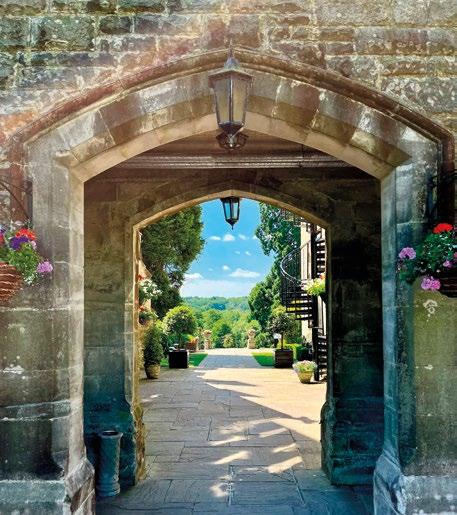

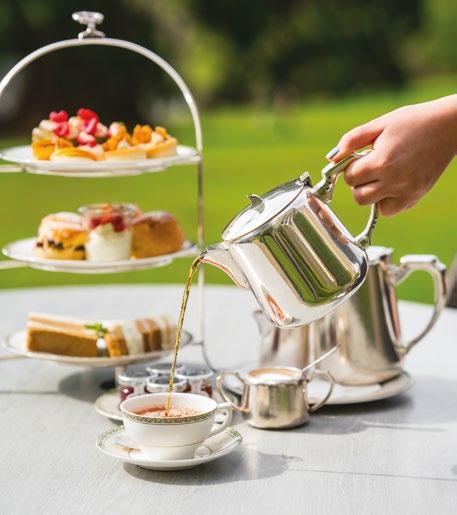



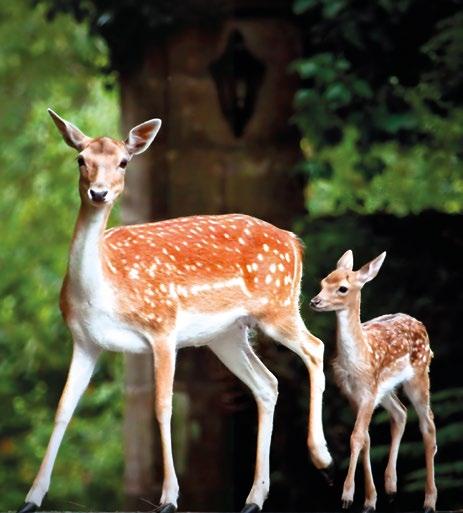


Welcome to our exclusive group of truly unique hotels, each offering a distinctive blend of fine hospitality and unforgettable experiences
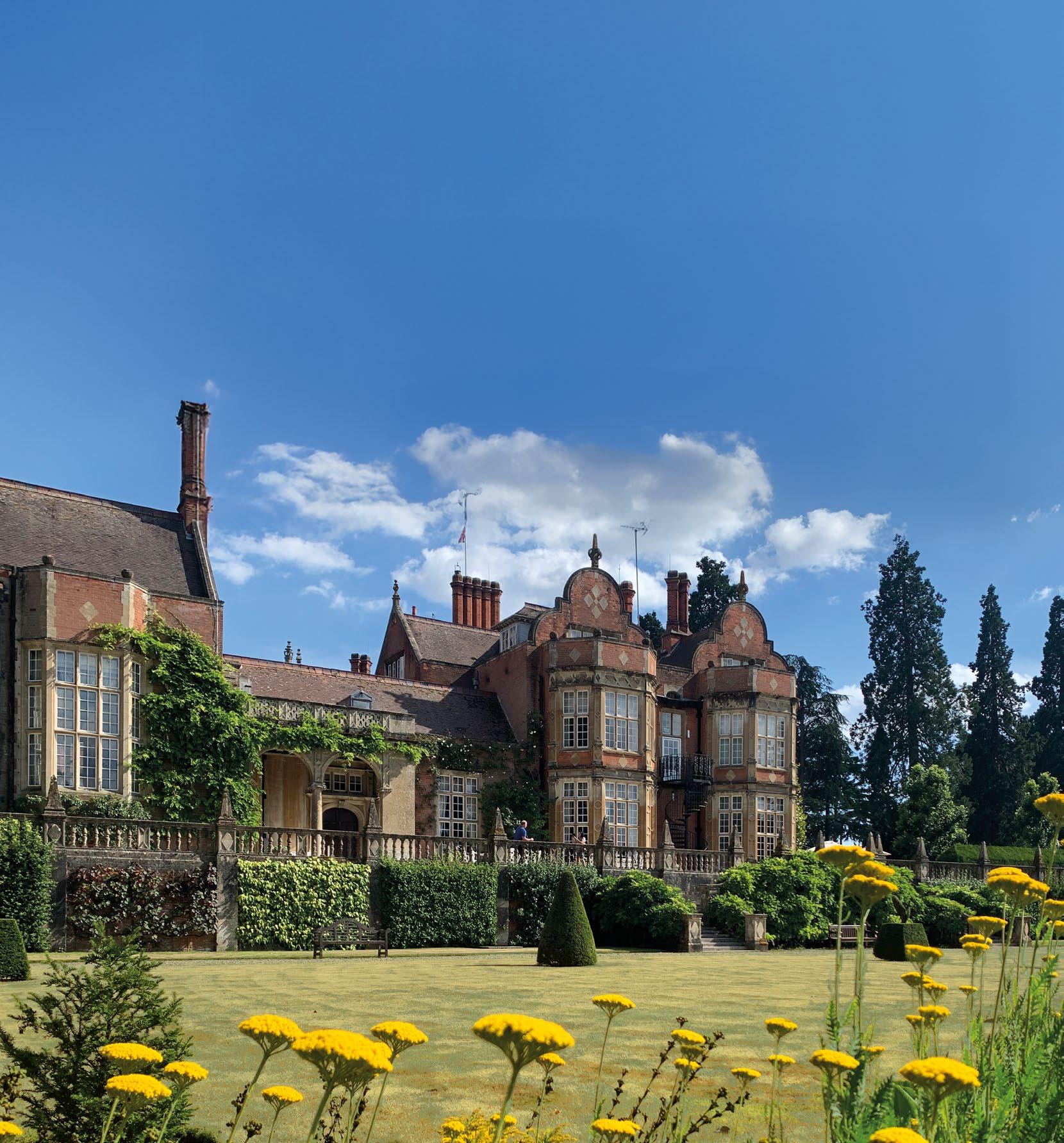
All Elite hotels are proud members of Small Luxury Hotels of the World (SLH), the world’s most desirable community of independently minded travellers and independently spirited hotels. Currently comprising 570 hotels in more than 90 countries, SLH proudly boasts that all its members are “anti-chain and anti-same”. The expert SLH team has personally visited, verified and vetted every property. slh.com

As Britain marks the 80th anniversary of VE Day, we’re reminded that Tylney Hall played a major part in both the World Wars. First as a hospital, later as a global shipping hub, this historic building proudly carved its name into 20th century military history.
Shortly after the outbreak of the First World War in 1914, huge numbers of injured troops began arriving on British shores. With existing medical facilities already full, many large UK buildings were transformed into military hospitals.
In 1914, Tylney Hall’s owners, Sir Lionel and Lady Phillips, offered the Bachelors Wing for use as an auxiliary hospital – an annexe to Cambridge Military Hospital at Aldershot. Initially 45 beds were installed at the country house, which soon
grew to 50. The well-equipped facility for wounded soldiers was staffed by a local Red Cross Voluntary Aid Detachment (VAD). The female volunteers were trained in first aid, home nursing and hygiene and cookery classes. Men were trained in first aid in-the-field and stretcher bearing.
A scrapbook held in the University of Southampton Special Collections describes the hospital. Archivist Lara Nelson says: “Mrs Balgarnie, the Commandant in charge and part of the Hants 16 Detachment, had excellent organising powers and was responsible for the furnishing and equipment.
“The hospital housed large, light, and airy apartments, bathroom, and washing-up arrangements. The nurses had their own private sitting room, and their sleeping quarters
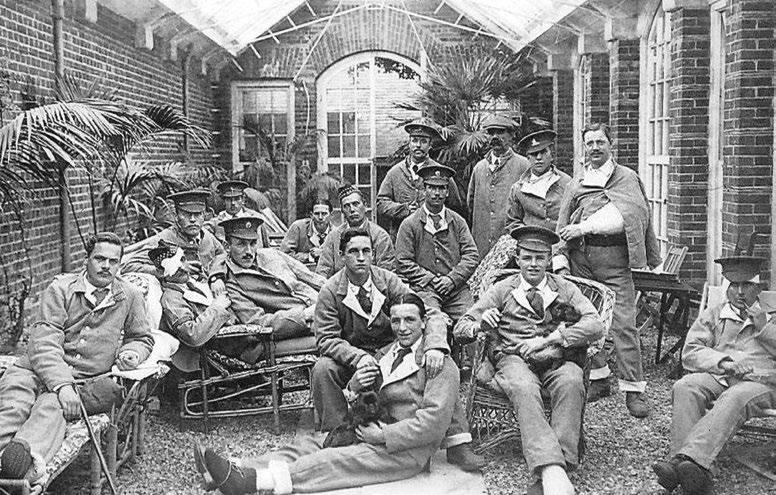

were separate from the hospital, as well as a spacious and wellequipped kitchen.”
By November 1915, some 559 patients had been treated at Tylney Hall. Staff performed 100 operations and there was only one death.
The hall’s beautiful gardens were instrumental in the patients’ recovery, as they could enjoy time outside in peaceful surroundings and rest in the orangery, where they would play cards and draughts.
The grounds were also used by the Army Service Corps Remounts Service to keep mules. These animals played a crucial role in the First World War to transport food, equipment and ammunition over rough terrain.
According to local records, trees from the estate were felled and taken to Hook station for use as pit props in the trenches in France and part of the Hall
estate was used by a small factory to make medicines to treat mustard gas victims.
Before the end of the war, Tylney Hall was purchased by Major George Hennessy of the King’s Royal Rifle Corps, descendent of brandy producer Richard Hennessy.
In 1919, the hall and much of the estate was acquired by cavalryman Major Herbert Robin Cayzer.
During World War II, Tylney Hall became the headquarters for Cayzer’s company, Clan Line Steamers Ltd, one of the largest shipping businesses in the world at the time, transporting passengers and freight to destinations such as India, South Africa and Australia.
Many of the company’s ships were requisitioned by
the government for the war effort, while Cayzer, then Lord Rotherwick, commanded a battalion of the home guard.
Many of his company’s vessels were bombed, mined or sunk by German U-Boats, and by the end of the war, 30 ships had been lost. But many more prevailed, helping to underline Tylney Hall’s place in military history.
For the past 40 years, the Grade II-listed hall has been part of Elite Hotels, and today’s guests can lose themselves in its old-world charm. The house was built in 1900 and has many beautiful architectural features, including the Italian walnutpanelled Great Hall and an Italian ceiling brought from the Grimani Palace in Venice.
The hotel has 112 bedrooms and suites, some of which
T: 01256 764881 E: enquiries@tylneyhall.com W: tylneyhall.com
Guests at The Grand are assured of our very finest hospitality in the south of England’s only five-star coastal hotel. Since The Grand joined Elite’s collection 26 years ago we have continuously lavished it with our trademark quality, with many improvements up to and including last year’s makeover of the Garden Restaurant and the unique lounge-style dining space we now proudly call The Colonnade.
Today, The Grand offers 152 bedrooms and suites, two award-winning restaurants and no fewer than 17 private dining and meeting rooms. Our outdoor pool is ever-popular, and we also have an indoor pool, a fully equipped gym and eight spa treatment rooms sitting within our welcoming Health Club.
Popular with families and businesspeople alike, its mixture of opulent old-school splendour and 21st century facilities and service also makes for the perfect wedding venue.
T: 01323 412345
E: enquiries@grandeastbourne.com
W: grandeastbourne.com
offer four-poster beds and spa baths, plus indoor and outdoor swimming pools, a gymnasium and spa treatment rooms. Sample the innovative cuisine with a distinctly British twist in the award-winning Oak Room Restaurant, or enjoy afternoon tea in one of the period lounges, or on the terrace. For those planning a wedding, it’s hard to imagine a more romantic location than the Tylney Suite.
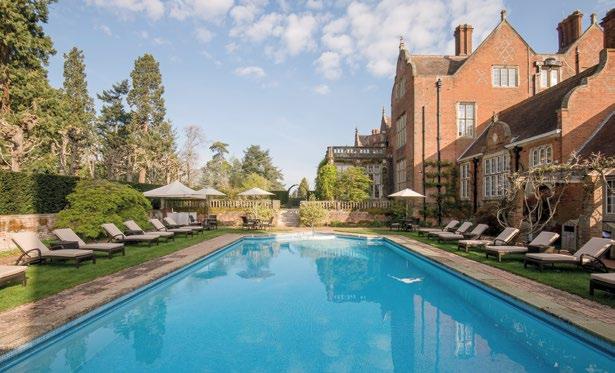
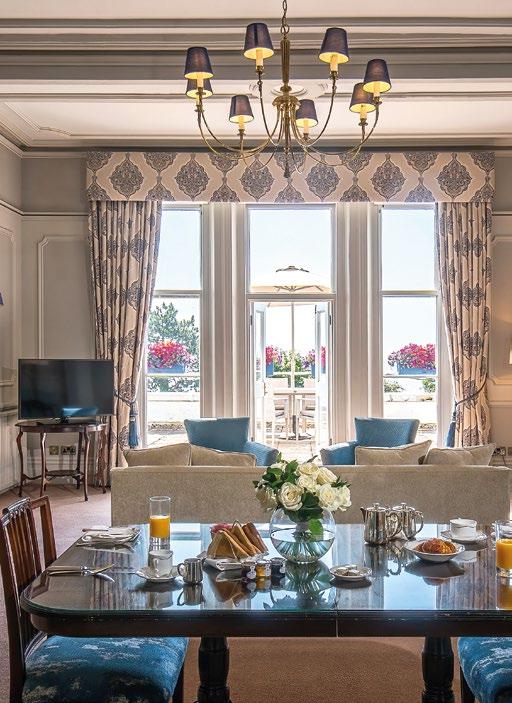

EAST SUSSEX
Few country house hotels compare with the luxurious setting of Ashdown Park, and fewer still offer such a magnificent combination of elegance, style, award-winning dining and outstanding business and leisure facilities. This historic building is set within its own 186-acre part of the 6,000-acre Ashdown Forest, a magnificent and significant part of England’s natural heritage and famously the setting for AA Milne’s Hundred Acre Wood, where Winnie the Pooh had his adventures. Read more about the forest on p16.
The hotel has 106 bedrooms and suites, plus extensive leisure facilities, including pool, gymnasium, outdoor tennis courts, spa treatment rooms and an 18-hole par 3 golf course. You can choose from fine cuisine in the two AA Rosette Anderida Restaurant or the more relaxed contemporary menu served in our newly refurbished Forest Brasserie. Ashdown’s converted chapel, with its stunning stained-glass windows, makes for an unforgettable wedding setting.
T: 01342 824988
E: enquiries@ashdownpark.com
W: ashdownpark.com
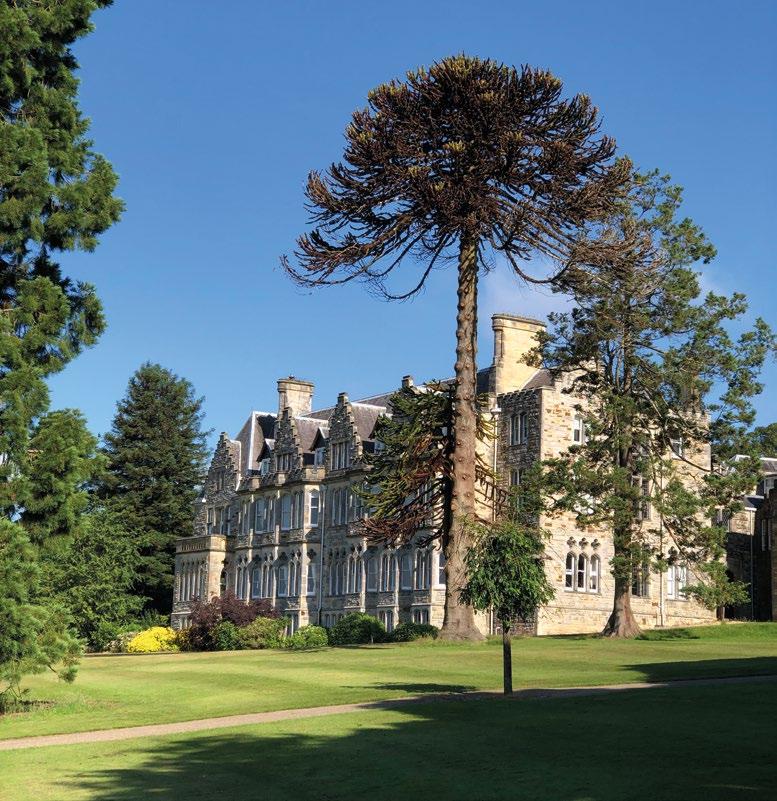


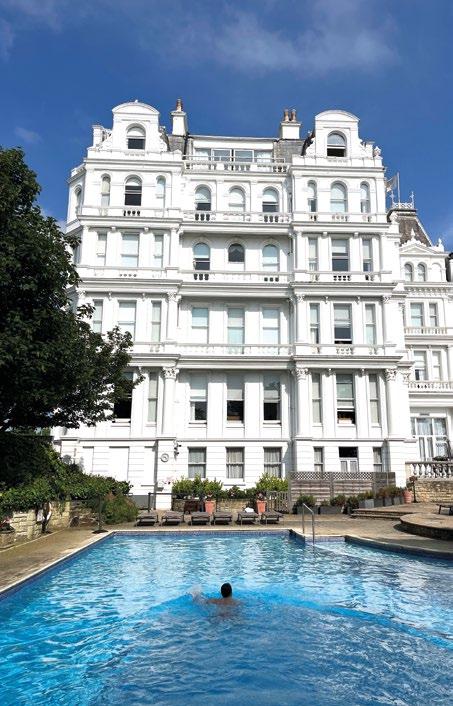
Music, food, love and murder! Lasting memories await at Elite Hotels this summer

MURDER MYSTERY EVENINGS
Unleash your inner detective to help solve an intriguing murder mystery while enjoying a fabulous gourmet dinner!
THE GRAND
26 Sep
TYLNEY HALL
16 Oct

ASHDOWN PARK
‘THE GREATEST SHOW’ MUSICAL DINNER
27 Sep
Enjoy a delectable three-course dinner and be captivated by the sounds of Too Darn Hot as they bring Broadway classics to life.
OH, WHAT A NIGHT! JERSEY’S BEST AND DINNER
7 Nov
Join us for an unforgettable evening with this sensational live tribute to the iconic Jersey Boys, including a sumptuous dinner.
GRAND
DINE & GROOVE: A SOUL, FUNK AND MOTOWN EVENING
23 May
Dinner in the Compton Ballroom followed by a sensational live show from the




A NIGHT OF QUEEN: DINNER & ROCK ROYALTY
19 July
An electrifying performance from super Queen tribute band Pure Queen, preceded by a delicious three-course dinner.
DANCING QUEEN: AN ABBA DINNER
12 Sep
Three-course dinner with wonderful live hits from the super talented ABBA Chique.
ASHDOWN PARK JAZZ AFTERNOON TEA ON THE LAWNS
Accompanied by the Niagara Jazz Band 26 May
AFTERNOON TEA WITH THE GATSBY GIRLS
A charming live performance transporting you back to the roaring 20s! 20 July
THE GRAND 150TH ANNIVERSARY AFTERNOON TEA
Featuring an exquisite menu inspired by the most notable moments and traditions that have shaped the hotel. Until 30 Nov
TENNIS-THEMED AFTERNOON TEA
The perfect accompaniment to the Lexus Eastbourne Open Tennis at Devonshire Park. 23 June-6 July
AIRBOURNE AFTERNOON TEA
Celebrating Eastbourne’s own international airshow.
14-17 Aug
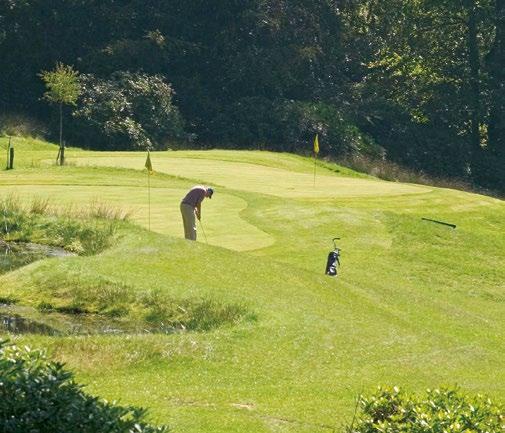

TYLNEY HALL
LIVE MUSIC AFTERNOON TEA April-Nov (selected dates)
PRIDE, PASTRIES & PEMBERLEY –AN AFTERNOON TEA INSPIRED BY JANE AUSTEN
Celebrating Jane’s 250th birthday! Read more on page 34.
1 May-30 Nov
ASHDOWN PARK
FATHER’S DAY GOLF & LUNCH 15 June
THE GRAND EASTBOURNE
FATHER’S DAY BARBECUE FEAST 15 June
TYLNEY HALL
FATHER’S DAY LUNCHEON 15 June
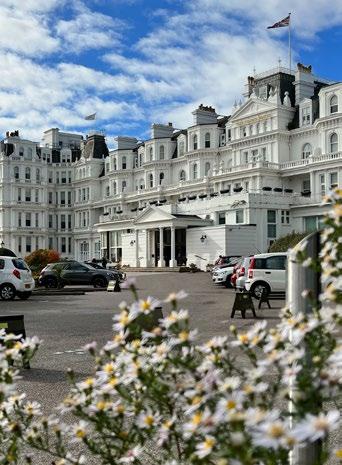
THE GRAND
150 YEARS OF MUSIC, MONARCHS & THE GRAND HOTEL
Celebrate the Grand’s anniversary in style with a magical three-day festival bringing to life many of the colourful personalities who have stayed or performed at the hotel. Sweeping across eras from Queen Victoria to King Charles III, top class performers will evoke stars from Dame Nellie Melba to Claude Debussy, with narration by Kevin Whately and Madelaine Newton. Packages are available for 2 or 3 nights, as well as dinner and entertainment only tickets. Visit grandeastbourne.com 21-24 Nov
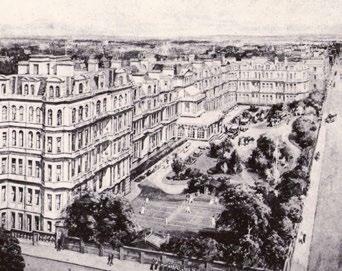
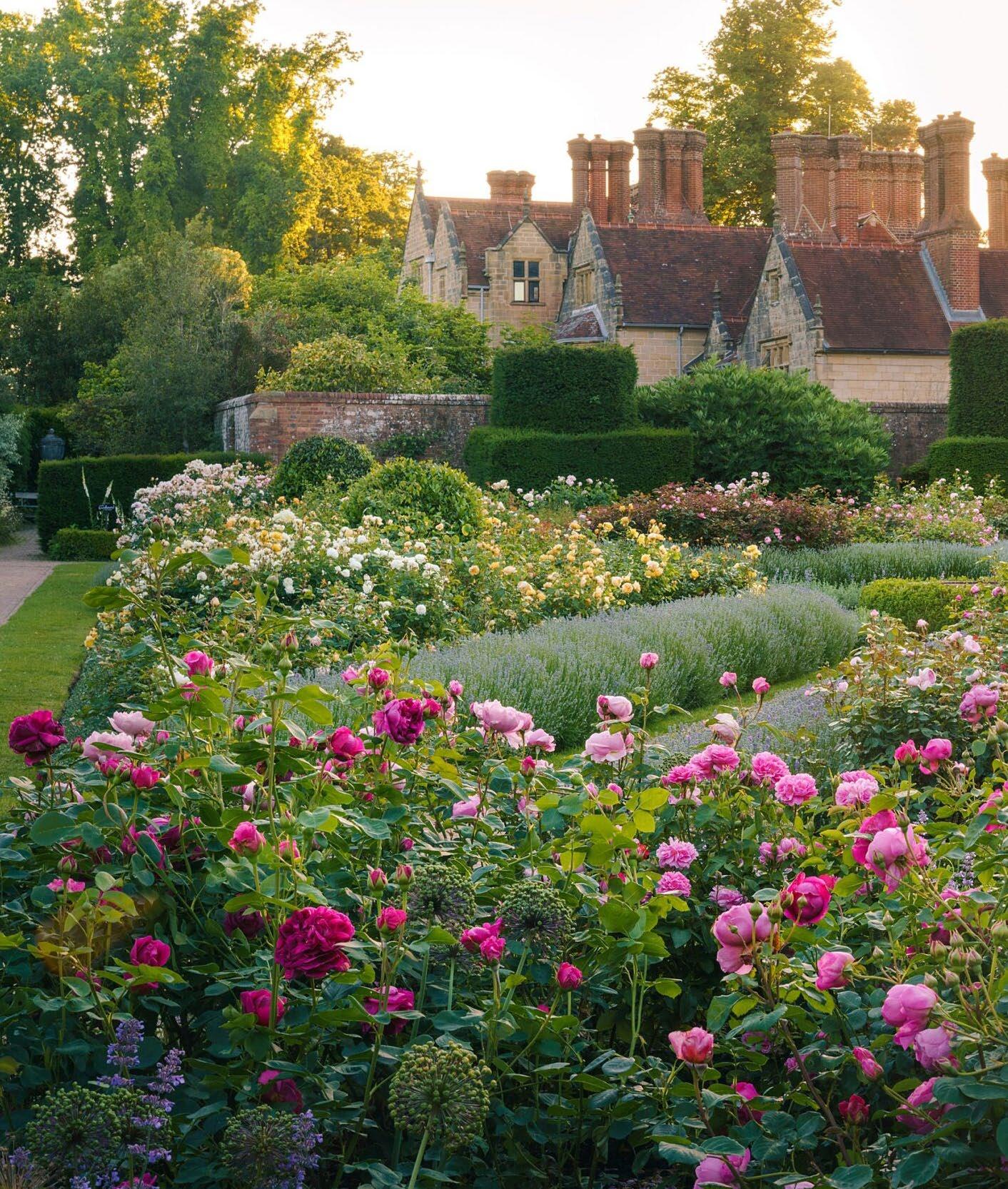
Bird song, the gentle buzz of bees and sweetly fragranced summer breezes… you can’t beat a day out at an English country garden. Here are nine beautiful spaces that will restore your tranquillity

Take a stroll around a world of horticulture, from grasslands of North America and the Australasian trees in Coates Wood to the Himalayan Glade and Asian Health Garden. See aquatic plants on boardwalks of The Slips and Black Pond and explore the colourful bog garden. Native flowers and grasses of Coronation Meadow look splendid in summer months and the iris dell is like a fairyland. Wakehurst is part of the Kew Gardens family and is also home to The Millennium Seed Bank, an underground collection of over 2.4 billion seeds from around the world. Visitors can see scientists at work, conserving this special collection for the future.
Ardingly, Haywards Heath, West Sussex RH17 6TN kew.org/wakehurst
The gardens at Sheffield Park were purchased by the National Trust in 1954 and are open all year round, however, the house itself is privately owned and not opened for visitors.

GILBERT WHITE’S HOUSE AND GARDENS
Naturalist Gilbert White penned one of the bestselling books of all time, The Natural History of Selborne (1789). He chronicled the growth of his garden at The Wakes, which he filled with flowers, herbs and fruit trees, in his diary from 1751-1793. Enjoy views from White’s Haha at the end of the main lawn, or his rotating winepipe barrel seat on the mound in the meadow, which frames different vistas as it turns.
The Great Oak was planted in 1730, and the working garden still supplies fruit and veg to the kitchen and shop.
High Street, Selborne, Alton, Hampshire GU34 3JH gilbertwhiteshouse.org.uk
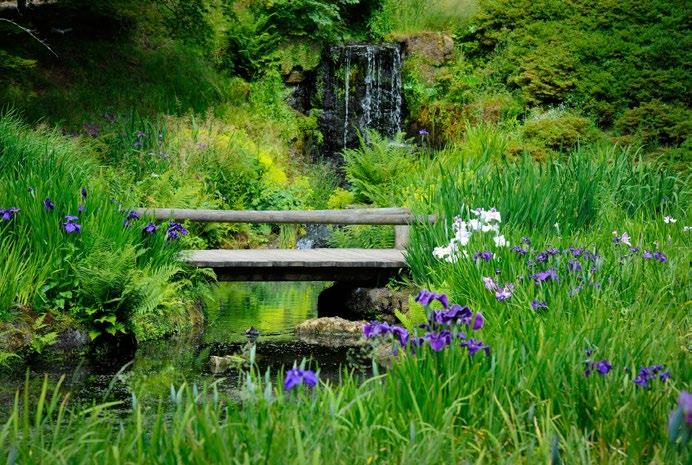
SHEFFIELD PARK AND GARDEN
Tree species from around the world stretch to the skies in this Grade I-listed garden, with influences of landscape architects Capability Brown and Humphry Repton.
At its heart, paths meander around four lakes, through leafy glades and woodland. The River Ouse runs along the border of the parkland, where a meadow provides a wildlife haven for species such as kingfishers, butterflies and dragonflies. Listen out for steam trains approaching on the Bluebell Railway and spot signs of the site’s WWII heritage such as a pillbox with faint graffiti marks made by Canadian troops, and the remaining bases of brick and concrete Nissen huts. Uckfield, East Sussex TN22 3QX nationaltrust.org.uk/visit/sussex/sheffield-park-and-garden
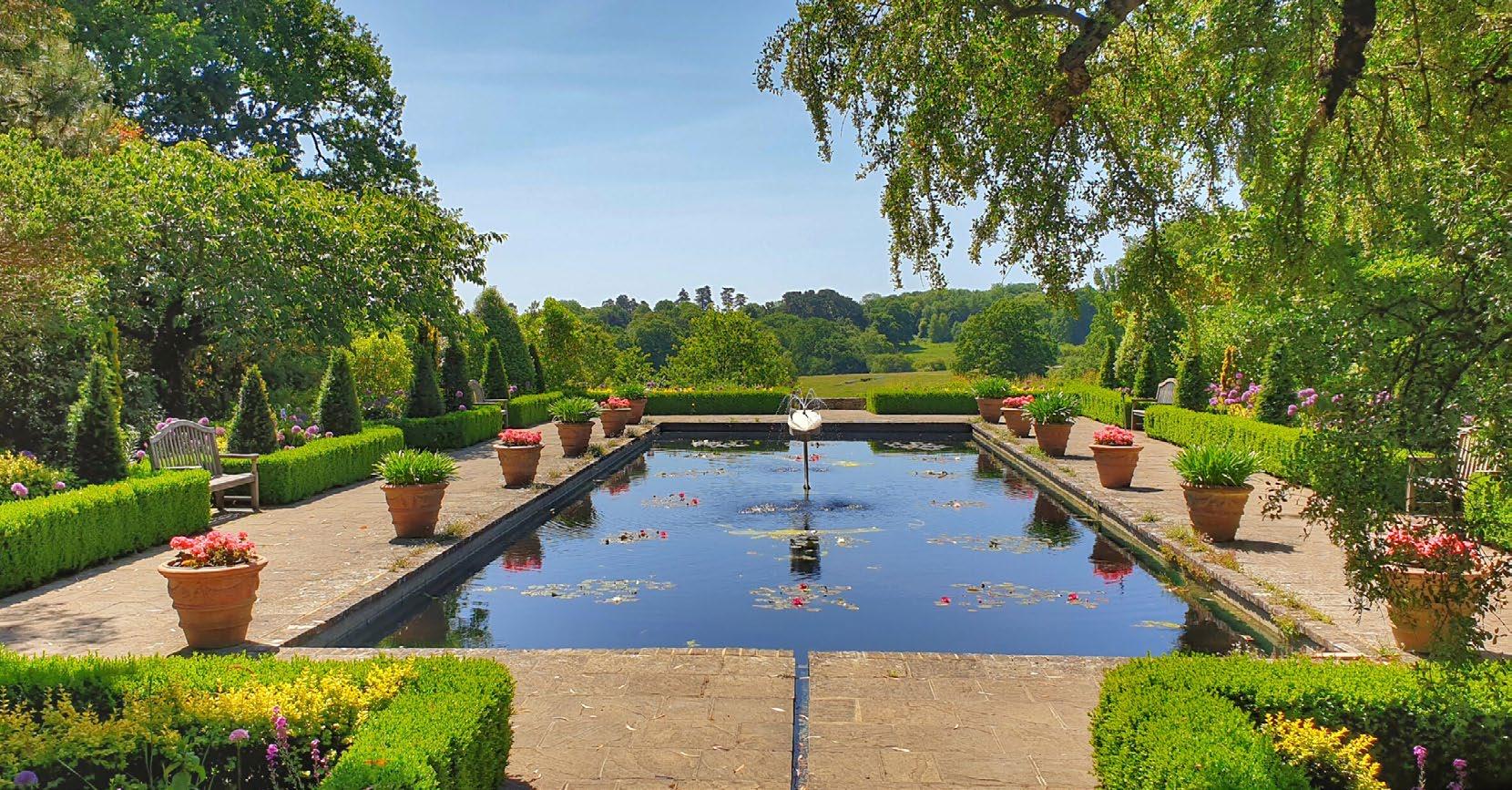
BORDE HILL GARDEN
Discover a series of living Garden Rooms set within more than 380 acres of heritage-listed parkland with historic woodland, tranquil lakes and views across the Sussex High Weald. Wander around a formal lily pool surrounded by Italian-style planting and discover exotic, sub-tropical plants in a secret, sunken garden. The Mid-Summer Border is a highlight and blazes with fiery-coloured perennials, grasses and shrubs. See the potting sheds, where many of the species in the garden were nurtured, and enjoy the scent of some of the first Chinese rhododendrons to be introduced to Britain by 19th century plant hunters Robert Fortune and Joseph Dalton Hooker.
Borde Hill Lane, Haywards Heath, West Sussex RH16 1XP bordehill.co.uk

MICHELHAM PRIORY
This 800-year-old priory is set on a moated island, created by damming the River Cuckmere.
Founded in 1229 by Augustinian canons, the seven-acre gardens around this historic house feature an Elizabethan Great Barn, medieval gatehouse, a mid-16th century watermill and kitchen, physic and medieval herb gardens. Soak in the rich history as you take a walk around the moat, feed the ducks and explore the sculptures in the grounds. Upper Dicker, Hailsham, East Sussex BN27 3QS sussexpast.co.uk/attraction/michelham-priory
A majestic red brick summerhouse dating back to 1635 is the focus of this remarkable garden, which stretches to include acres of meadows and woodland.
The sweeping lawn is ideal for picnics, and you can spot wildlife from the bird hide on the water meadows. The ornate glasshouse in the Grade II-listed walled garden was reconstructed in 2008 on the site of an original, mid-18th century structure. Once a Tudor palace, the mansion house has connections with several famous names, from King Henry VIII to writer Jane Austen, who attended dances there, hosted by friends of her family.
Vyne Road, Sherborne St John, Basingstoke, Hampshire RG24 9HL nationaltrust.org.uk/visit/hampshire/the-vyne
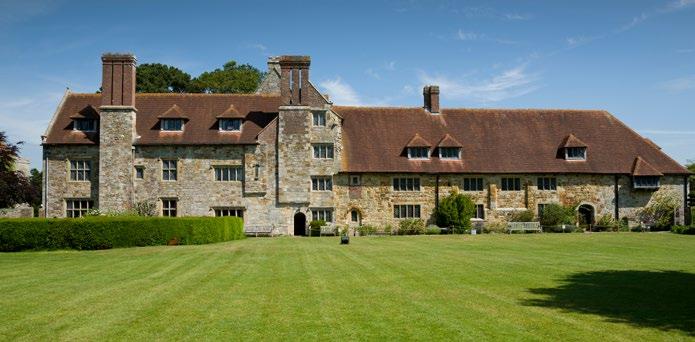
BATEMAN'S
Once the home of The Jungle Book author Rudyard Kipling, this Jacobean house, dating back to 1634, is surrounded by colourful borders, tall yew trees and grand iron gates. There is an ironstone slab in the doorway which, legend has it, was placed there to keep witches out.
Bateman's inspired Kipling’s writing with Park Mill, a working 18th century watermill, featuring in Puck of Pook’s Hill. The rose garden and lily pond were designed by Kipling and his drawing is on display in the house. Surrounding the garden are small fields, hedgerows, ancient trees, hidden ponds and magnificent views across the Dudwell Valley. Bateman’s Lane, Burwash, Etchingham, East Sussex TN19 7DS nationaltrust.org.uk/visit/sussex/batemans
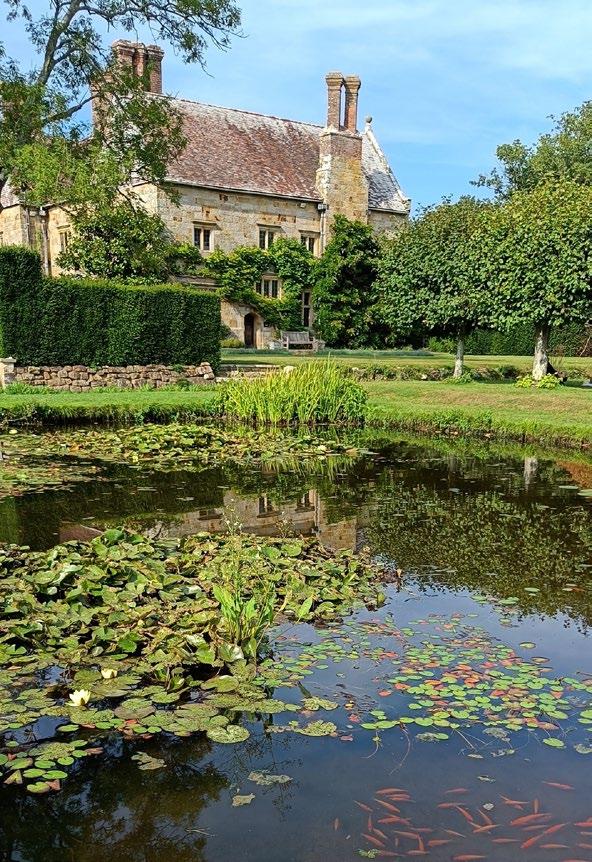
Rudyard and Caroline Kipling bought Bateman's in 1902 saying: "We have loved it since our first sight of it…" They left it to the National Trust in 1939.
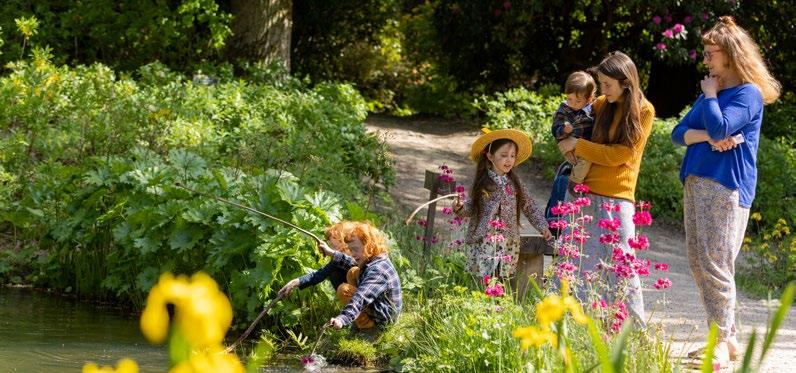
A paradise for wildlife lovers, Leonardslee Lakes & Gardens has been the subject of extensive restoration. Summer is the prime time to spot the wild inhabitants of this unspoiled estate, which was once part of St Leonard’s Forest, an ancient forest of the High Weald.
Foxes, rabbits, deer, grey squirrels, weasels, stoats, shrews and voles are all in residence with birds such as green woodpeckers, nuthatches and treecreepers among the branches. Herons enjoy the shallow lakeside water, alongside kingfishers and wild mandarin ducks. The gardens are also home to a colony of wallabies, introduced in 1889. Brighton Road, Lower Beeding, Horsham, West Sussex RH13 6PP leonardsleegardens.co.uk
This impressive water garden features small lakes, waterfalls, fountains and ponds teeming with fish. Planting is both formal and informal, with indoor houses showcasing plants including ferns, cacti and bromeliads. The Sussex Plant House, featuring temperate planting, was designed by Chelsea Flower Show Gold Medal winner Juliet Sargeant.
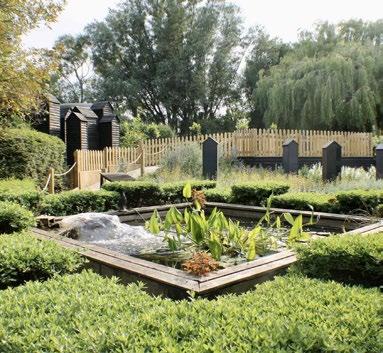
Brightly coloured carp provide contrast to the dark green foliage in the peaceful Oriental gardens. The Sussex History Trail winds through the gardens, featuring beautifully crafted models of historic Sussex landmarks. Avis Rd, Newhaven, East Sussex BN9 0DH paradisepark.co.uk/the-gardens
Tylney Hall’s gardens will be open to the public on Sunday 18 May and Sunday 29 June as part of the National Garden Scheme. Entry will be £7.50 per adult, children free, with all proceeds going to the NGS charity. See ngs.org.uk to book.
Tylney Hall is an RHS Partner Garden, offering RHS members free entry to the estate all year, excluding NGS days.
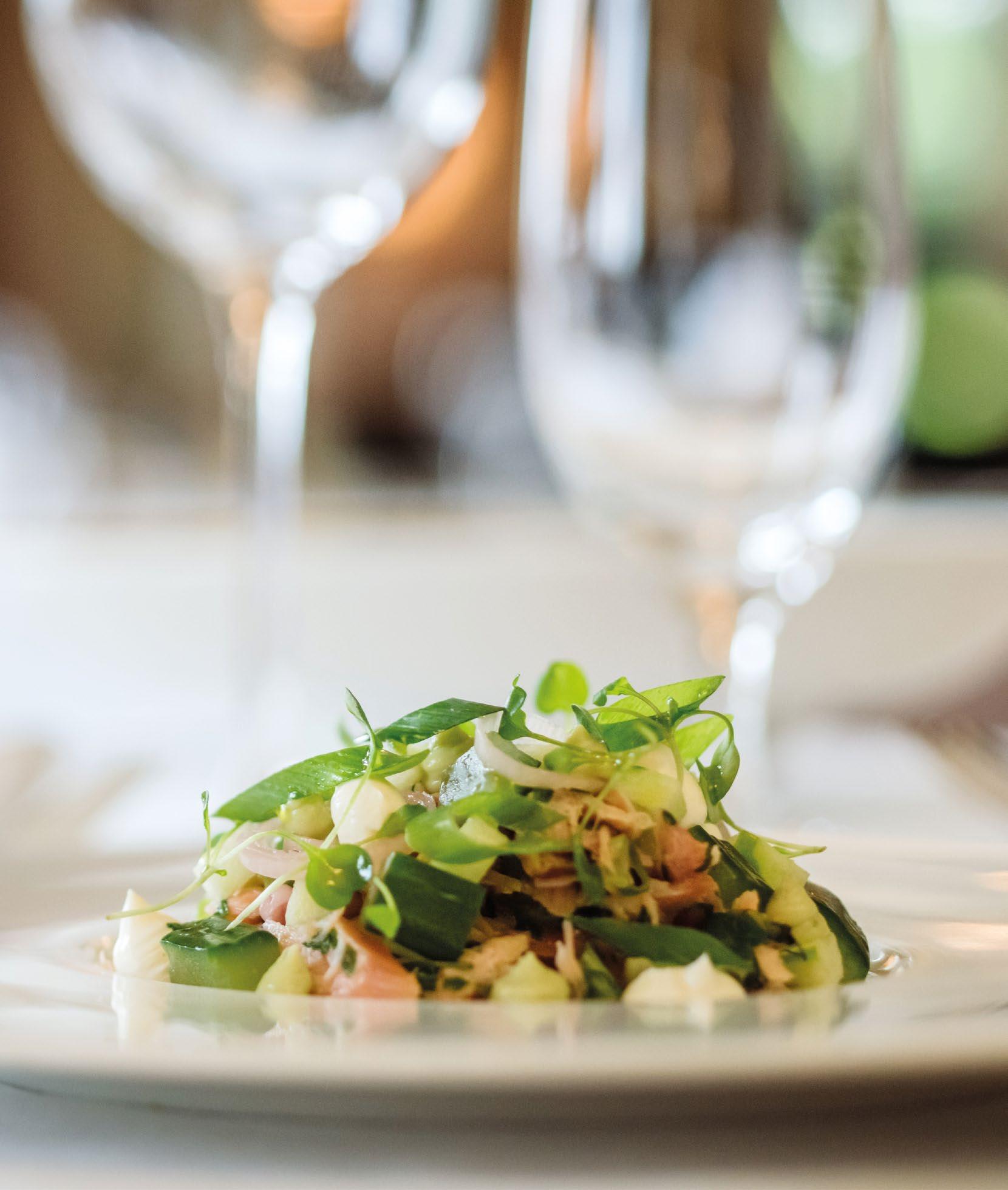
As Andrew Wilson takes the helm as Executive Chef at Ashdown Park once again, we spoke to him about his experience and plans
After getting an A in GCSE Art and Design, Andrew Wilson was planning to become an architect, before a part-time job cleaning fish in a small restaurant grew into 30 years of experience working in kitchens. “I don’t know if cheffing and architecture goes together,” he jokes. “Maybe it does; maybe it’s a thing!” Perhaps there is something to be said
for a link, given the creative vision both require – a vision Andrew has had from being a 16-year-old at Bournemouth & Poole College, where he was awarded Best Student in Food Production. He went on to work in small, private hotels along the south coast near where he grew up in Devon; a few years in London working in Group Development; Head and Executive
Chef roles at various establishments – including Michelin-star restaurants – and we are now pleased to welcome him back to Ashdown Park.
“I’ve been at Executive Chef level with Ashdown; I’ve had Group Development roles with companies Fego and Countrywide; I was Head Chef at one-Michelin-star-restaurant Drake’s [now The Clock House] in Ripley before I was then Executive Sous Chef at two-Michelin-star The Capital in London, with Éric Chavot.”
Andrew cites this time spent working with the French Michelin-starred chef as his food journey inspiration. “The way he teaches is a bit crazy, but you’re kind of jagged on the outside and he smooths those edges for you. What you gain from working at that level with someone like him, you can’t buy that. He is definitely one of my food heroes.”
As well as career highlights, Andrew has many culinary achievements. “In the Roux Scholarship – which, I would say, is probably the ultimate competition for any young chef –I got to the semi-final twice. I made the final once as well, where I was cooking against Lisa Goodwin-Allen – a winner on Great British Menu.”

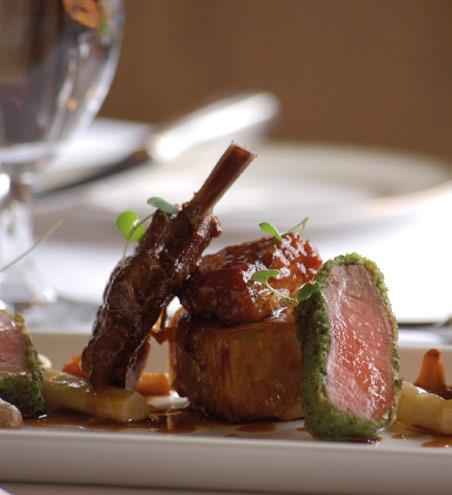

“YOU’VE GOT TO BE CLEVER –USING GREAT PRODUCE BUT KEEPING IT NICE AND SIMPLE”
Getting to Executive Chef level is also a significant pride point for him. “That’s quite a highlight, and looking back, you realise that’s where you aspired to be.”
Returning to this role at Ashdown Park, he recalls his first position at the hotel was in 1999 as Junior Sous Chef before being promoted to Senior Sous Chef, when he was awarded Ashdown Park Hotel Leader of the Year in 2005. Since then, he has returned twice as Executive Chef, between 2011 and 2021, opening Forest Brasserie in 2020.
“There’s always been that connection with Ashdown Park,” says Andrew. “I’m passionate about it, it’s a wonderful place – probably the only place where I’ve said the door has always been left open from both sides. But coming back this time must be right for both parties.”
One way Andrew plans to make it right for Ashdown is by streamlining operations. “Because man-hours come into everything, you’ve got to be clever with your menus – using great produce
but just keeping it nice and simple. In terms of all the food and beverage areas here, we’ve got the brasserie, breakfast, afternoon teas, room service, the restaurant… so there’s lots of areas to touch on, and if you overelaborate on all of those, it can cause problems. So it’s just identifying those areas and making it more streamlined.”
This also feeds into the dining style the team plan to offer customers. “We are looking at more relaxed dining and not so much that ‘fine dining’ phrase that’s become a little outdated. I think, when a customer comes to a restaurant, they’re just looking for really good food; so, if you’re doing that, everything else kind of works. And when you’re doing all this tiny, intricate stuff – which I have done in the past – it takes a big team to do it. I think a slight tweak on that more relaxed emphasis, while maintaining the quality, is certainly what this country house hotel needs, so that’s where the restaurant is heading.”
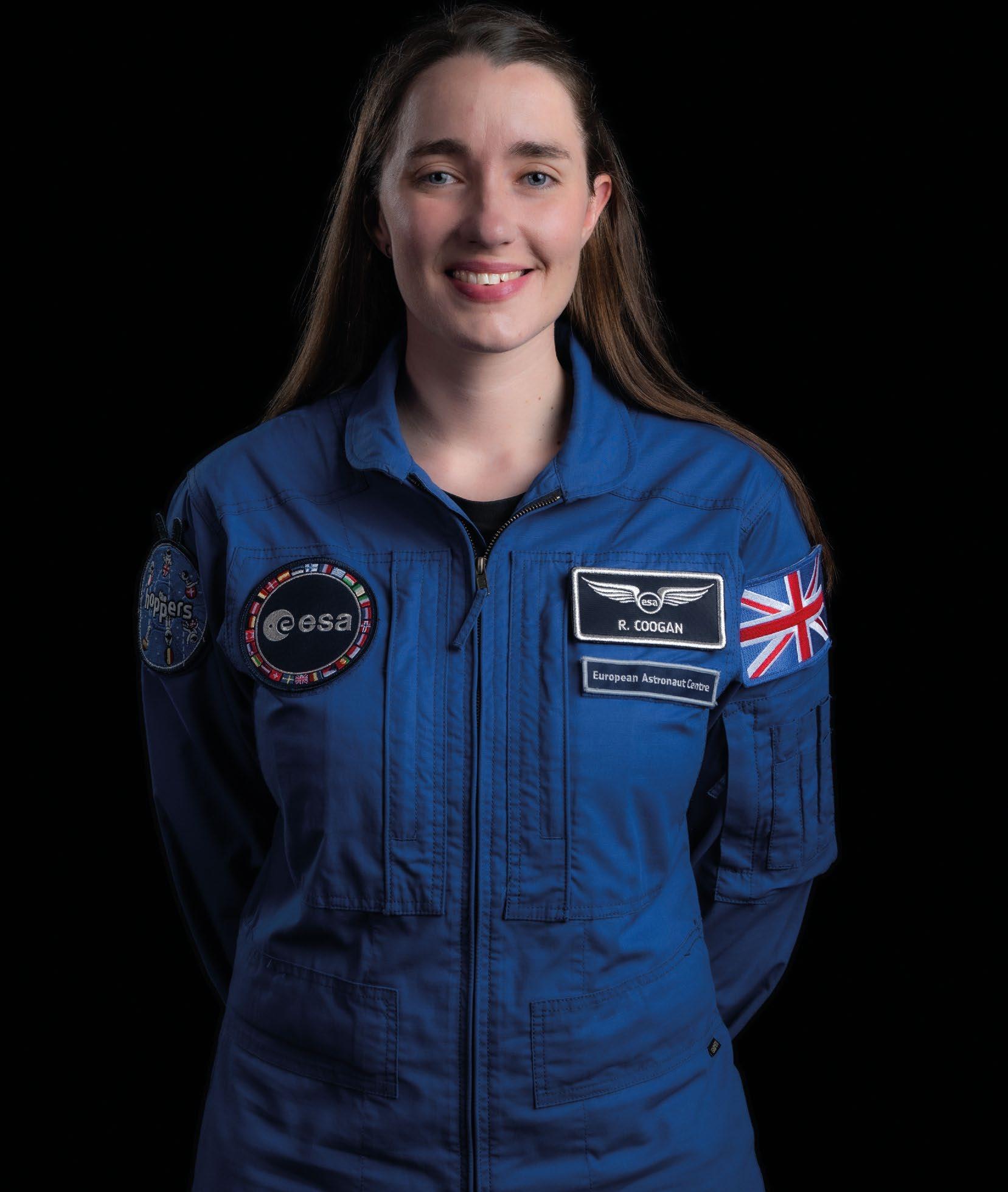
Astrophysics graduate Rosemary Coogan is counting down to her first space mission as a UK astronaut
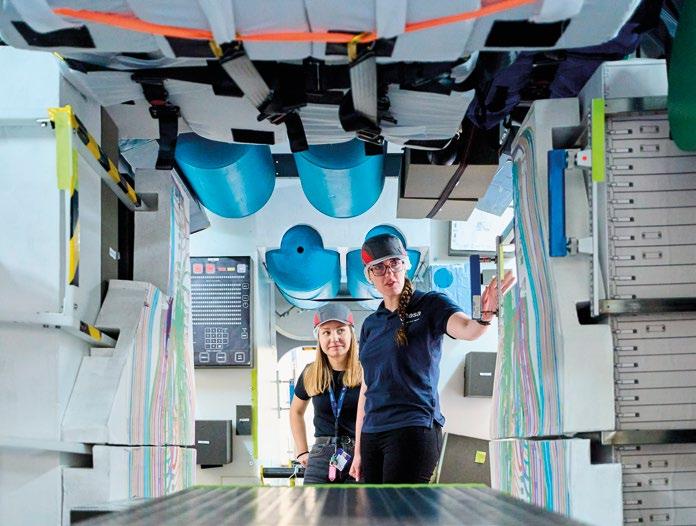

Scientists from the University of Sussex are not afraid to boldly go where no man – or woman – has gone before. The specialists are involved in several space missions, from finding water on Jupiter’s moons to understanding black holes, investigating the formation of planetary systems and the evolution of galaxies. One university PHD graduate is even set to blast off into space. Astrophysics alumna Dr Rosemary Coogan will become the UK’s third astronaut following her graduation from the European Space Agency (ESA) astronaut training programme.
Rosemary, who was selected as an ESA astronaut candidate from more than 22,500 applicants in 2022, trained at the European Astronaut Centre in Cologne, Germany. The 33-year-old from Belfast, Northern Ireland, will now take part in operational tasks within ESA until she is assigned to a mission.
Rosemary said: “Graduating from astronaut basic training is an incredibly moving moment for me. From dreaming about space, I’m now one step closer to reaching it and I’m filled with gratitude and determination
to make the most of this extraordinary opportunity.”
Rosemary and her fellow graduates were the first new recruits to ESA in 13 years. She has been trained to conduct scientific experiments aboard the International Space Station, given medical training and studied astronomy, astrophysics, radiation physics and meteorology. The astronauts have been trained in technical skills including spacecraft systems, flight engineering, robotics and life support systems.
Rosemary has undergone winter survival training in the snowy mountains of the Spanish Pyrenees and experienced the effects of hypoxia (low levels of oxygen in blood tissues) first hand in a pressure chamber, enabling her to recognise symptoms and respond
accordingly in case of an air leak or reduced pressure in a spacecraft. She has also experienced centrifuge rides to simulate high g-forces during rocket launches and zero-gravity flights to provide a taste of the unique challenges and sensations awaiting her in space. The training involved a visit to NASA’s facilities at the Johnson Space Centre in Houston, Texas, and scuba diving for spacewalk training under water in NASA’s 12m-deep Neutral Buoyancy Laboratory. This facility hosts a replica of the entire International Space Station, where astronauts can perform underwater simulations of spacewalks.
As a certified ESA astronaut, Rosemary is now ready to enter the next space station training phase. “I’m proud to share this moment with my
“FROM DREAMING ABOUT SPACE, I’M NOW ONE STEP CLOSER TO REACHING IT”
“WE STAND READY TO EMBRACE THE CHALLENGES AHEAD, UNITED BY OUR SHARED PASSION FOR SPACE”

fellow astronaut graduates and of the commitment of our international team to exploration,” she said. “Together, we stand ready to embrace the challenges and opportunities that lie ahead, united by our shared passion for space.”
England’s south coast has long been at the forefront of the UK’s connections with space. The Flying Saucer Working Party, the UK MOD’s first official study into UFOs, was established in 1950 after staff from two RAF bases – one near Chichester and the other near Farnborough – spotted a “shining,
revolving, and disc-like” object in the sky. Radar scientist Sir Henry Tizard, the MOD’s then Chief Scientific Adviser, insisted that UFO sightings should not be dismissed without some form of proper scientific study. He authorised a small team to investigate sightings. The UFO desk remained open until 2009, when it was concluded that none of the sightings posed a significant military threat to the nation.
Over the years, many unusual incidents have been reported in the skies over Sussex. Here are just a few: l 14 August 1950: A 50ft-wide disc UFO was seen over the Royal Aircraft Establishment, Farnborough.
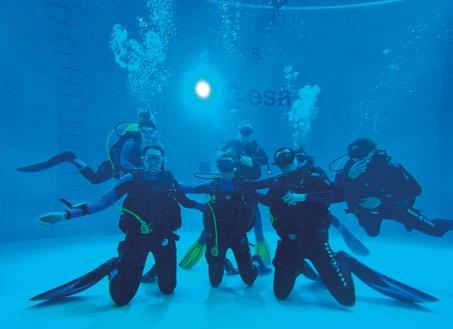
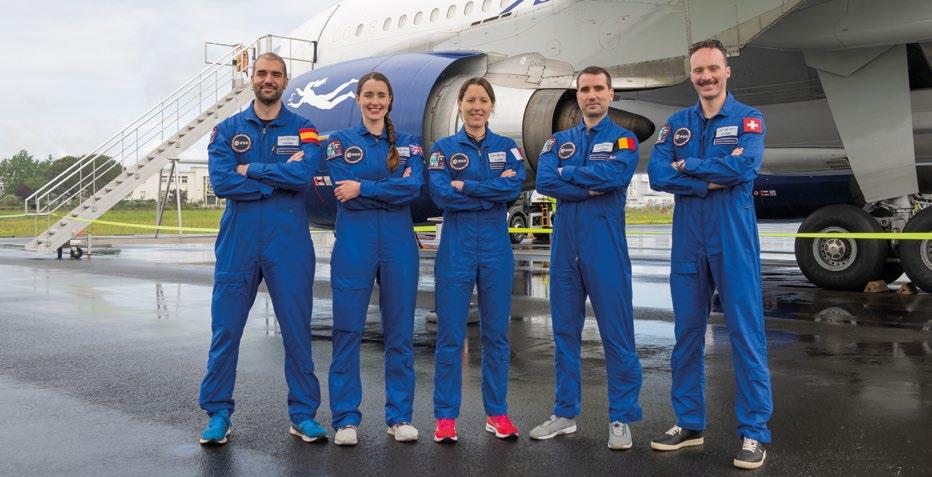

l 9 October 1953: Two British European Airways pilots on their way from London to Paris observed a saucerlike object flying ahead of them for 30 minutes over the English Channel.
l 17 July 1955: Around 30 witnesses saw a large, humming, saucer-shaped object on King Harold's Way in Bexleyheath at lunchtime. It hovered over the nearby primary school before shooting off into the sky.
l 25 October 1967: Witnesses, including policemen in five different cars across East Sussex, reported seeing a fiery cross in the sky in the early hours of the morning. It was also seen in Wales.
l 1960s and 70s: Many strange sightings and occurrences were reported in and around Clapham Woods, West Sussex, giving the area its reputation as a UFO hotspot.
l December 1980: Strange objects and lights were reported in the sky over Rendlesham Forest in Suffolk, just outside RAF Woodbridge. One serviceman described seeing a “craft of unknown origin”.
l 12 August 1983: Two beings in green overalls beckoned a 77-year-old fisherman on to their spacecraft after it landed near the Basingstoke Canal in
Aldershot. He claims he was examined but rejected because he was “too old”.
l 1990s: Sussex was a hotspot for crop circles in the 1990s. Elaborate patterns appeared overnight in fields in Falmer, Felbridge, Shoreham, Andover, Horsham and more. It has long been speculated that these mysterious circles are the work of aliens.
l 15 July 2001: A pilot spotted an object the size of an eagle, moving fast over Hellingly. He described three dark brown and black circles joined together.
l 16 May 2006: Two Hastings residents reported seeing an alien outside their kitchen window.
l 18 October 2008: A bright spherical light was spotted hovering over a house in Brighton. It began to depart slowly, spinning then shifting upwards at a rapid speed before disappearing.
A full list of UK UFO sightings, as reported to the police, is available online at gov.uk/government/ publications/ufo-reports-in-the-uk
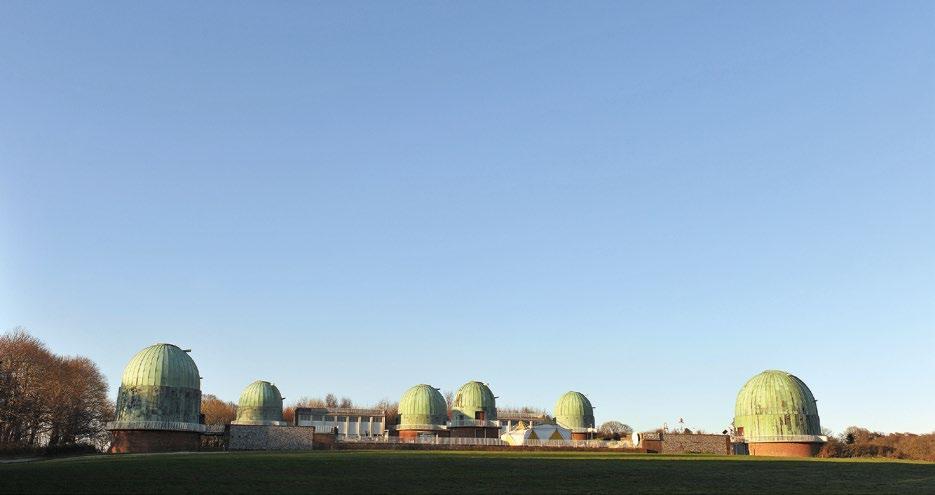
The Observatory Science Centre in East Sussex is celebrating its 30-year anniversary this year. This stunning Grade II*-listed building with its eye-catching domes is the former home of The Royal Greenwich Observatory.
The centre is part of charitable organisation Space Projects Ltd and holds regular science festivals, astronomy courses and stargazing evenings. Open daily, there are plenty of hands-on features and exhibitions to help visitors of all ages get to grips with space Herstmonceux, Hailsham BN27 1RN. 01323 832731. the-observatory.org

We are honoured to announce that our local Air Ambulance charities – saving lives across Kent, Sussex, Surrey, Hampshire and the Isle of Wight – will be Elite Hotels’ Official Charity for 2025
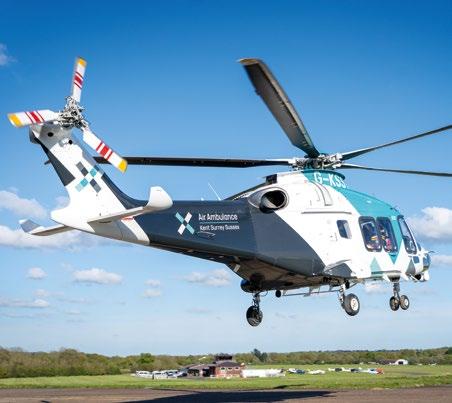
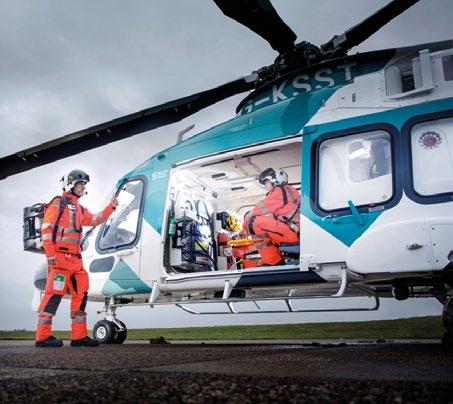
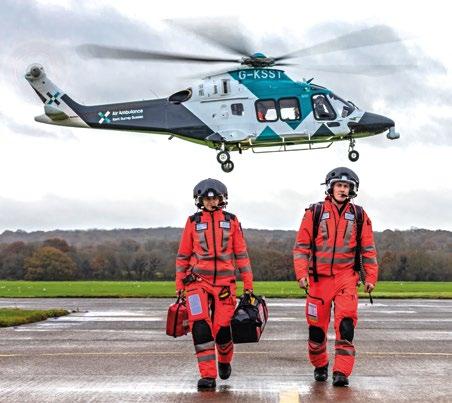
Elite Hotels have joined forces with two Air Ambulance charities, as they reveal their charity partner of the year for 2025.
Using their flying emergency rooms – aka helicopters – these teams of doctors, paramedics, pilots and more save lives on a daily basis.
KSS, the ambulance team that serves Kent, Sussex and Surrey, runs an average of nine missions every day –and over 3,000 annually – across their region.
Alex Redwood, Head of Corporate Development, revealed the last four years have been their busiest. “We ran 12 missions on Christmas Day last year, so while you tucked into your turkey, 12 people had the worst day of their life. And we landed at Gatwick 14 times, so even going on holiday things happen to people, unfortunately.”
With three helicopters in their fleet, two are in service 24/7, 365 days a year. They can fly for 10,000 hours before requiring minor servicing, with enough kit and fuel to carry out three consecutive missions before returning to base to refuel and reload.
Calls come into their dispatcher at South East Coast Ambulance Service, then go through to Redhill, where the helicopters are based. “The pilots run out, start them up, and they’re
off the ground within four minutes,” shares Alex. “Inside are two pilots, a paramedic and a doctor. And people generally don’t have accidents in wide open spaces, so the helicopter may have to set down away from the scene and the doctor and paramedic will run to the injured person, carrying an 18kg bag on their back.”
KSS is a pioneer in world-leading research and cutting-edge technology. It was the first air ambulance to fly at night and to carry blood on board. “Before that, your blood was replaced by saline solution, which is obviously no good for carrying haemoglobin around your body”, Alex says. “The doctor brings various interventions to anaesthetise you and take control of your body. They can open your chest and, quite literally, staple your heart back together. Anything that would happen in the clinical environment of a hospital ER, we can do on the roadside at two o’clock in the morning, when it’s snowing. Like the paramedics, we do world-class basics but also look at what we can add to preserve life.”
In further innovation, KSS is working with Gatwick, Everdrone and others using drone technologies to deliver defibrillators. “If Amazon can use drones for shopping, why not deliver a defibrillator?” says Alex. “The drone would drop the defibrillator in your back garden so you could quickly
access it to restart a loved one’s heart, which is awesome.”
KSS is also focused on creating more lifesavers, so more people know how to use defibrillators. It contributes to Restart A Heart every October, and last year trained 80,000 people, via online and in-person sessions, to perform CPR and use a defibrillator. Within our partnership, Elite is thrilled to be receiving this vital training – as well as a live ‘lunch and learn’ session at The Grand and Ashdown Park.
Costing £20.4 million annually to keep running – 88 per cent of which comes from supporters – KSS relies on donations. We are honoured to help. In the Autumn/Winter issue of Elite magazine we'll hear from the Hampshire & Isle of Wight team partnering with Tylney Hall, and find out about specific fundraising projects.

If you would like to donate, please scan the QR code to the hotel Just Giving of your choice below



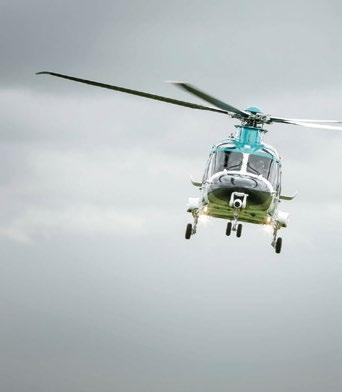

Peaceful skies, fluffy clouds, the landscape stretching out beneath you like a patchwork quilt… flying by hot air balloon over Hampshire and Sussex is the height of serenity
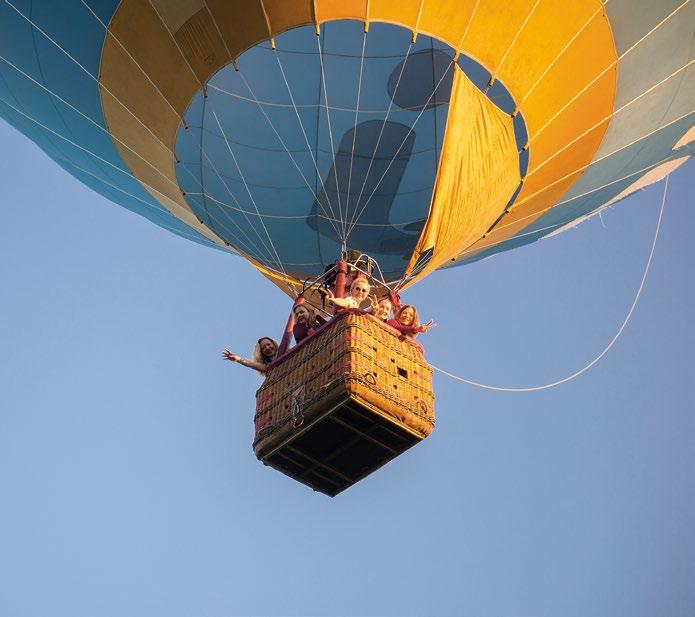
Until the early 20th century, hot air ballooning was the only way to fly. Its origins lie in rural France where in 1782, brothers Joseph and Étienne Montgolfiere began to investigate how they could use the heat from fire to inflate different materials. Their experiments gained attention from scientific circles and, when King Louis XVI asked for a demonstration, the brothers took their balloon made of cotton canvas and paper to Versailles. A sheep, duck and cockerel were placed in the basket below the 18.47m tall balloon, which successfully rose to a height of 600m; it travelled a total of 3.5km descending slowly after eight minutes.
The first manned outing took place around a month later and, in the years that followed, scientists and enthusiasts developed the concept to perform better and longer flights.
The invention of planes and other flying vehicles took the transportation world by storm in the early 20th century, but people continued to take hot air balloon flights for pleasure.
Float forward 100 years and flights

still take off across the UK daily between March and October, weather permitting.
Virgin Balloon Flights take off from locations across Hampshire and Sussex where you can enjoy stunning views of the countryside peppered with tiny houses, Ashdown Forest’s lush canopy, the rolling hills and chalk cliffs of the South Downs and much more.
On the day of a flight, after weather checks, passengers meet their pilot and ground crew at the launch site in plenty of time to experience a golden sunrise or the warm orange glow of sunset.
Everyone helps to unpack the balloon and, once it is lying flat, it is partially inflated with cold air. The pilot will then
ignite the burners and fill the balloon with hot air.
“The sheer scale of the balloons is amazing,” says Fred FitzGerald of Virgin Balloon Flights. “The ones we fly are absolutely enormous. We love getting people involved in the launch. There’s lots of little steps to perform. As soon as the balloon is ready, the pilot will prompt everyone to get into the basket.
“You hear the deep roar of the burners, and you start floating, rising up and getting gently blown along. When you take off, there’s a lot of ground noise. Once you are about 30ft up, there’s a layer of silence. You stop hearing the ground below you. You can hear traffic,
“ONCE YOU ARE ABOUT 30FT UP, THERE’S A LAYER OF SILENCE. YOU STOP HEARING THE GROUND BELOW YOU”

but it’s a low rumble, muffled and quiet. When you are in a balloon, there’s no steering. The pilot can only go up and down. You’re at the beck and call of the wind, which is exhilarating.”
During the flight, the pilot is busy looking out all around the balloon, watching the weather and monitoring the wind. They track the flight path on a tablet, making sure it’s not going over any protected areas or no-fly zones.
“Our pilots do an amazing job,” says Fred. “They make flying a calming and enjoyable experience. I’m not great with heights, but I loved it. I felt an indescribable mixture of butterflies and excitement. The pilot was so good at explaining what was going on, making it fun and having a laugh with passengers.”
Flights last about an hour, depending upon where the landing spot will be, which varies according to the wind. When the pilots make the decision to land, they’ll start releasing the hot air to decrease altitude.
After passengers disembark, the pilot deflates the balloon and then everyone can get involved in packing it away, “like a giant cinnamon roll”, says Fred, into a bag. Then it’s time for a prosecco toast and certificate presentation before

the ground crew returns everyone to the launch site by minibus.
“Flying by balloon is very relaxing and very exhilarating at the same time,” says Fred. “It’s a unique and special thing. Everything looks so different from above. The pilots make it really enjoyable, and I love the feeling when you land and say to yourself, ‘I just did that’.”
WADHURST
See the market town and surrounding countryside with views across to Bewl Water and the High Weald.
Partridges Lane, Wadhurst, East Sussex TN5 6LA
ALTON
Soar over Jane Austen territory, the New Forest National Park and the bustling town of Winchester. Chawton House, Gosport Road, Alton, Hampshire GU34 1SJ
PETWORTH
Observe rolling countryside dotted with pretty villages and look for the Ebernoe Common Nature Reserve.
London Road, Colhook Common, Petworth, West Sussex GU28 9ND
GUILDFORD
Enjoy the dramatic North Downs and landmarks like Guildford Cathedral. Shalford Park Sports Pavilion, Shalford Road, Guildford, Surrey GU4 8AA
See virginballoonflights.co.uk for information and to book.
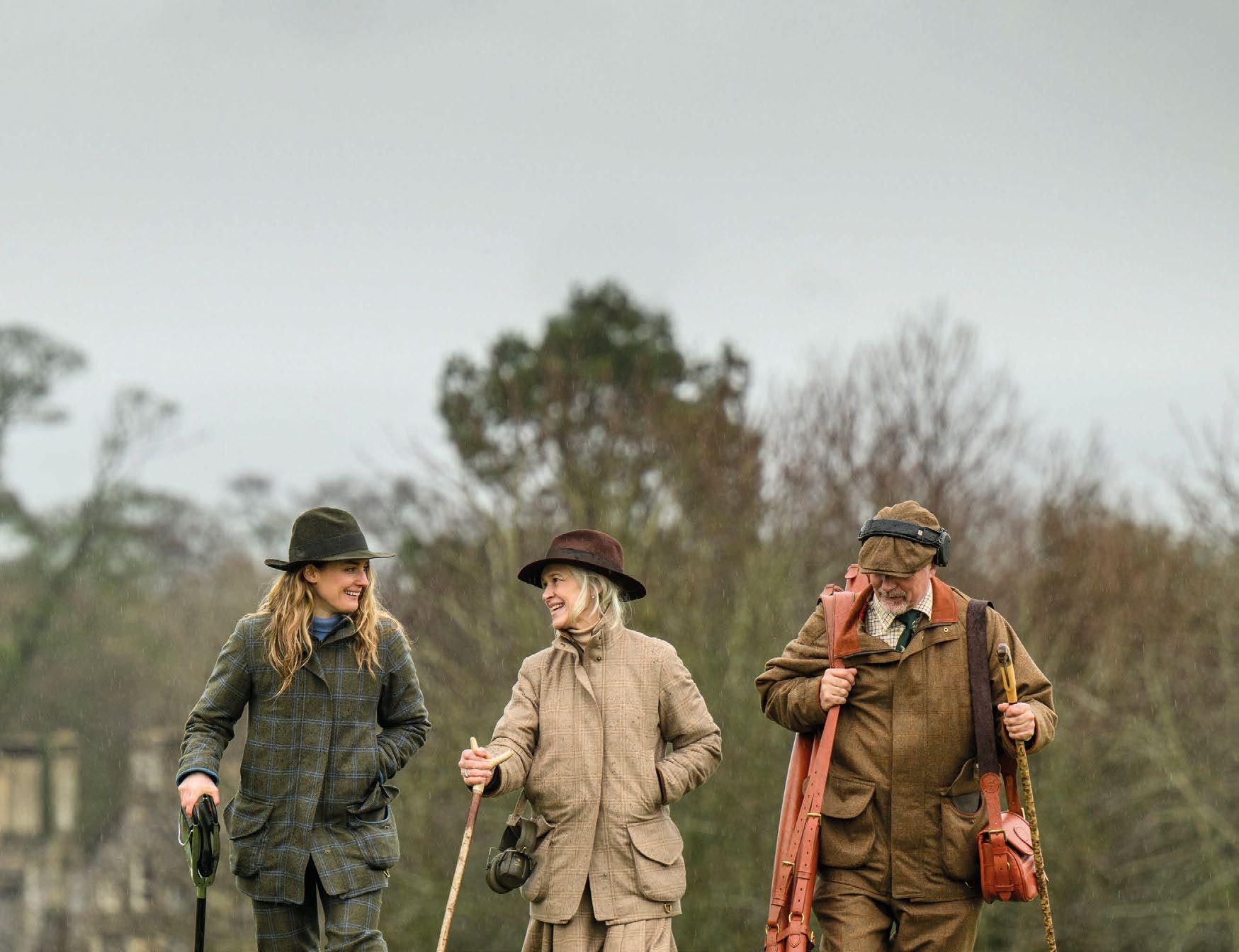


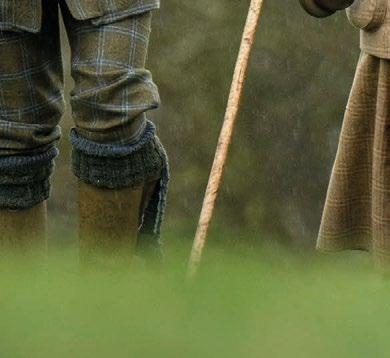

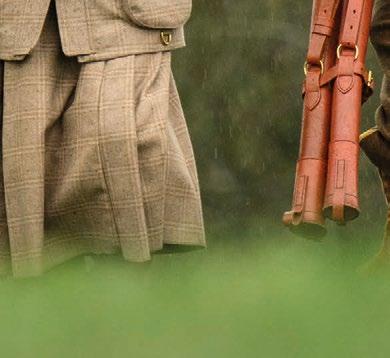




From elegant ballrooms to ornate gardens, our hotels offer a range of beautiful settings for a wedding. Here are some key things to consider when planning your big day
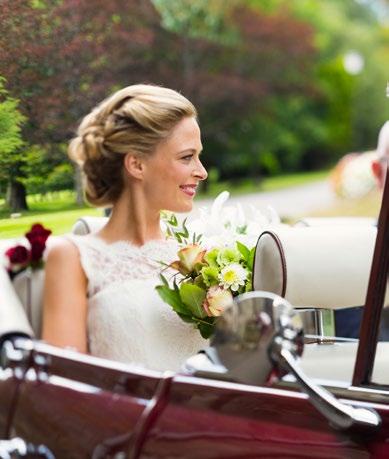
Keeping an idea of how much you can realistically or comfortably spend can also save you time, as it will prevent you looking at options that are outside of your means. There are numerous wedding budget calculators available online. Some of these set a maximum financial cap, which can be useful if you fall in love with something and need to know if you are able to splurge a little. But bear in mind, even with your upper spending limit, you should keep aside a little extra funding for any emergencies.
The date of your big day is likely to influence other decisions – if you have a set idea of when you want to tie the knot but then fall in love with a venue that’s unavailable at that time, you’ll be disappointed. Some venue types may also be better suited to certain seasons – so, a garden wedding in spring, or a beach wedding in summer. Decide where the wedding date lies on your priority list and whether there is any negotiation. And don't forget that off-peak weddings can be more affordable.
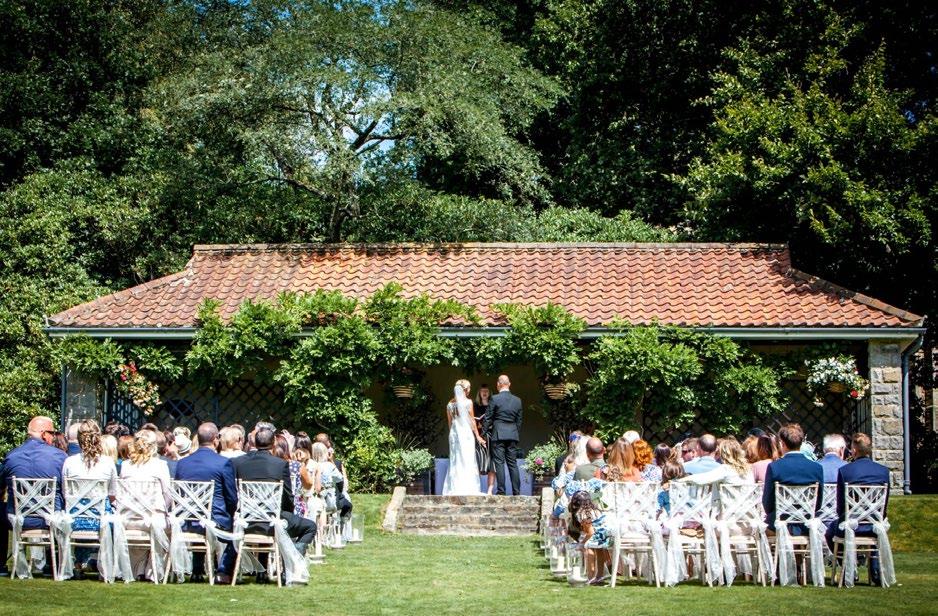

Picture what your dream day looks like. Will it be the stuff of fairytales, with castle-esque grandeur and formal, ornate details – such as The Princes Room at The Grand – or are you more drawn to the beauty of a relaxed outdoor wedding and being immersed in nature – such as at Tylney Hall’s Italian Garden? Having a vision can help inform other decisions, such as choosing colour palettes, flowers and outfits to compliment your venue
Compiling a guest list can help you make other big decisions with more confidence, such as catering and location. For example, if you were considering a destination wedding, additional elements –such as flights – and their costs may affect how many people you decide to invite. The length of your guest list will influence the venue you pick, as you’ll need to be sure it can accommodate everybody. Similarly, whatever catering style you choose – buffet or sit-down meal –and whether it’s part of the venue package or you source the catering yourself, you’ll have to ensure there is enough food and that any dietary requirements are met. Make the most of visiting venue open days, where they’ll be staged for a wedding, as you’ll get a better picture of how your day could look.

While research is extremely useful in your preparations, from flowers to favours and everything in between, with all the elements involved it can understandably feel overwhelming. The internet can be a great starting point. If you are on social media, follow suppliers that suit your vision. You could also put feelers out within your area – e.g. via community groups or word of mouth – for recommended local suppliers. The expert wedding teams at each of our Elite Hotels are on hand to share their experience, which can help you find what you’re looking for.

While many brides know exactly what style of wedding dress they want, others may be less sure. There are lots of attire options out there to suit your individual style and needs. Choose whatever makes you feel your best and most comfortable –whether that’s a more traditional dress or a unique outfit. Minimalist but structured designs inspired by the Renaissance, halter necks and three-dimensional appliques are currently trending. There’s also other clothing to consider, such groomsmen’s suits and the mother of the bride outfit. Why not gather your loved ones and make a fun day of getting everyone’s gear?

Ultimately, the planning of your wedding should help build the excitement for your big day. There may be a lot to organise, but remember, with each item you tick off your list, you’re one step closer to saying “I do”.

All our venues offer various packages and a dedicated team to make your day memorable. Join one of our wedding events to see what we offer:
ASHDOWN PARK
Open Evenings
Friday 27 June
Thursday 25 September
Wedding Showcase
Sunday 5 October
weddings@ashdownpark.com
THE GRAND
Open Evenings
Wednesday 28 May
Thursday 12 June
Wednesday 16 July
Thursday 21 August
Wednesday 24 September
Wedding Showcase
Sunday 12 October
weddings@grandeastbourne.com
TYLNEY HALL
Open Evenings
Thursday 22 May
Thursday 24 July
Thursday 28 August
Wedding Showcase
Sunday 21 September
weddings@tylneyhall.com






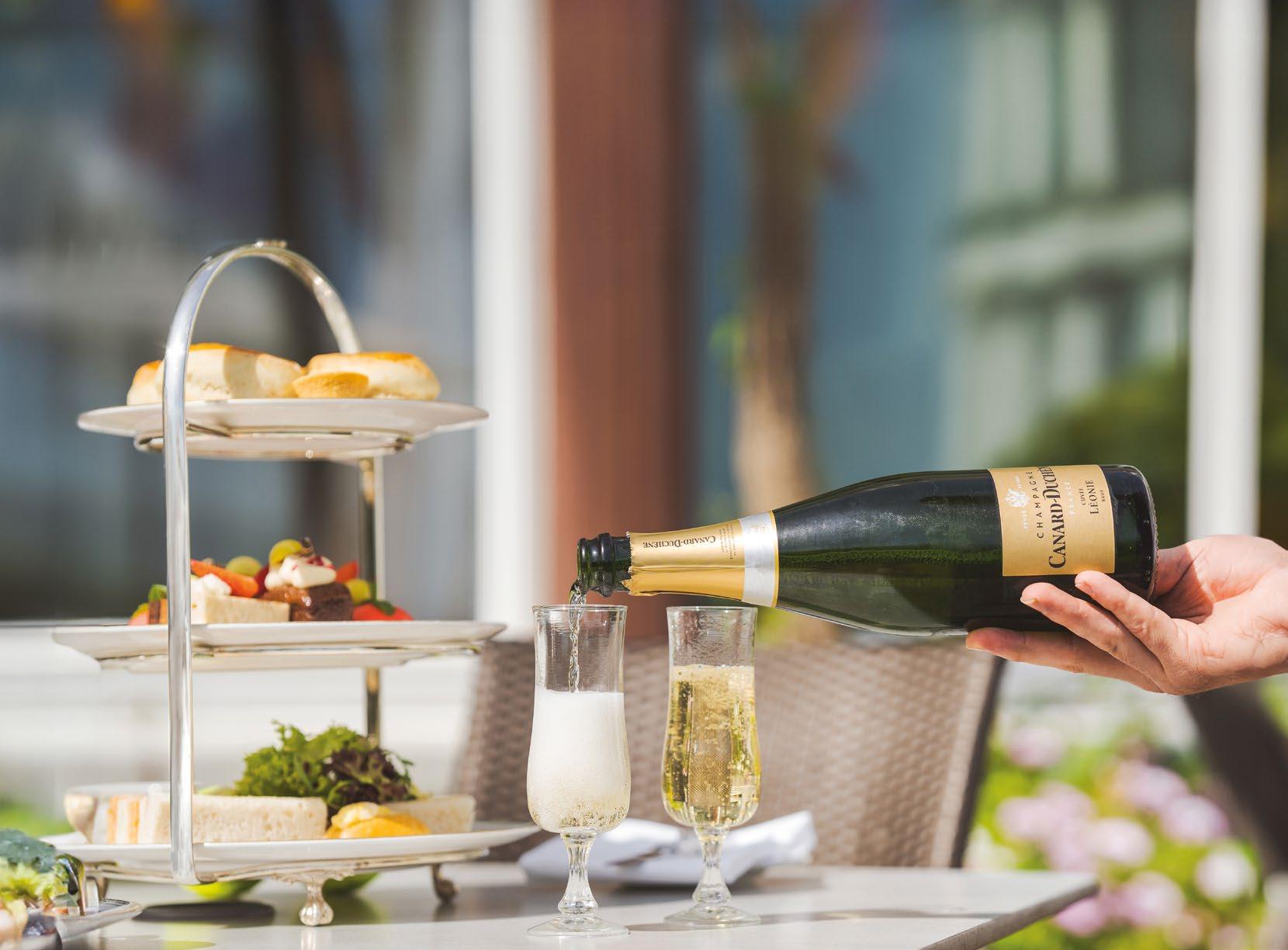

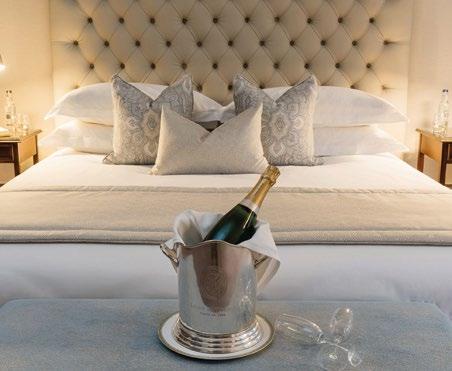

Join
us for a taste of
Pride, Pastries & Pemberley to celebrate the 250th birthday of treasured British author Jane Austen
In 1775 in Steventon, Hampshire just 16 miles from Tylney Hall, Jane Austen was born into a ‘large and clever family’. Hampshire was the only place she ever truly felt at home, and as she grew up in the parish rectory with her clergyman father and seven siblings, she began writing stories. It was at Steventon that she wrote the first drafts of three of her six legendary novels, Sense and Sensibility, Pride and Prejudice and Northanger Abbey, but Jane’s creative flow was interrupted at age 25 when the family moved away to Bath. The muse stayed dormant for eight years until, in 1809, Jane returned to Hampshire following the death of her father, taking up residence at Chawton. There she redrafted her first three books and also wrote three more – Mansfield Park, Emma and Persuasion
Although Jane needs no introduction, the scale of her achievement and richness of her legacy are impossible

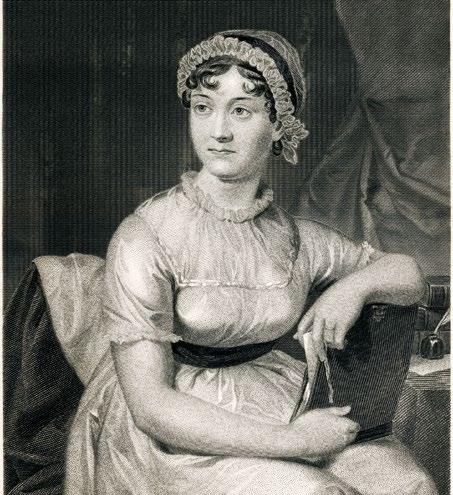
to underplay. A staple of both popular culture and literary acclaim, she has been mentioned in the same breath as Shakespeare and Dickens for her influence on the definition of English character. All the more incredible for a single woman working at a time when it was felt necessary for female writers to publish anonymously.
Chawton, just 14 miles from Tylney Hall and now home to a treasured Austen museum and visitor centre, remained Jane’s home until weeks before her death at the age of 41. “Chawton may be called the second, as well as the last home of Jane,” said
her brother James in his Memoir of Jane Austen. “For during the temporary residences of the party at Bath and Southampton she was only a sojourner in a strange land; but here she found a real home amongst her own people.”
Jane Austen’s House at Chawton holds an uparalleled collection of Austen treasures including first editions, Jane’s jewellery, letters, paintings, household objects and the tiny writing table at which she sat to create her masterpieces. It is open seven days a week from 10am-5pm until September.
Being proud to have one of English literature’s most beloved names as one of our own, Tylney Hall is honouring Jane’s landmark year by serving an Austen-inspired afternoon tea throughout 2025 from 1 May onwards. This indulgent but timeless treat brings the essence of Jane’s novels to life through a menu inspired by the Regency era and some of her favourite flavours. Savour not only delicate finger sandwiches, exquisite cakes and fine teas, but also Jane’s favourite treat, mini cheese toasties, which were prepared for her by her friend Martha Lloyd, who lived with the Austens at Chawton. Whether you’re a devoted Austen fan or simply appreciate finer things, this is a tea service most ardently recommended. Served daily from 1pm.
Enjoy our overnight package, which includes afternoon tea, accommodation, breakfast and access to Jane Austen’s House at Chawton. Visit tylneyhall.co.uk for more information.
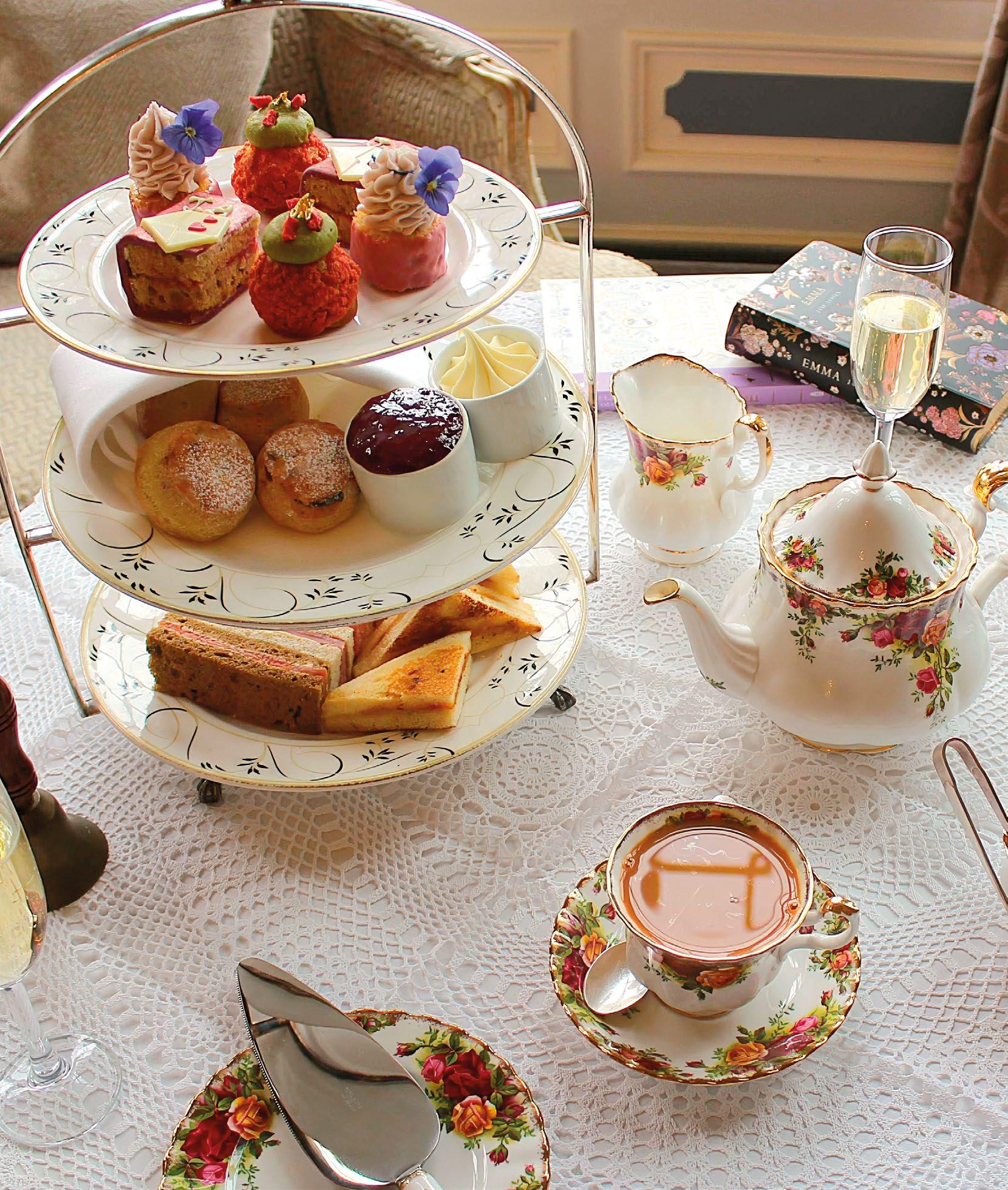

Three hundred years of experience is woven into every Wilton carpet, enhancing our hotels with its unique blend of innovation and tradition


The Wilton Carpet Factory has a rich history spanning more than three centuries as a producer of high-quality woven carpets. Established in the 17th century in the town of Wilton, Wiltshire, the factory became renowned for its craftsmanship and use of the innovative Wilton weave, a method that gave the world the first machine-made cut pile product. In 1835, the installation of Axminster looms marked the beginning of a new era, enabling more efficient production and allowing intricate designs to be woven into the factory’s renowned carpets. Generations of local people have worked at Wilton, adapting to changing tastes and technologies while preserving traditional techniques. The factory continues to produce exquisite carpets, blending centuries-old methods with modern high-speed loom technology. Good quality raw materials
are key when it comes to depth of colour and durability. Wilton carpets are made using British wool. It is naturally strong and resilient, making it highly resistant to wear and tear and ideal for carpet-making. Its structure helps the fibres retain their shape so that they bounce back, even under heavy foot traffic.
Wool fibres have a natural protective coating called lanolin, which makes them resistant to dirt and stains. This helps carpets maintain their appearance for longer periods. British wool also holds dyes exceptionally well, producing vibrant, deep colours. Its ability to absorb dye evenly ensures that the colours remain rich and consistent, even with regular cleaning or exposure to light. British wool is a renewable, biodegradable resource, making it a more sustainable option for carpet production.
The Wilton Carpet Factory lies next to two chalk bed rivers, the Wylye and Nadder, which are home to a diverse range of wildlife such as otters, wildfowl, water voles and swans. The business respects this habitat, which has been designated by Natural England as a Site of Special Scientific Interest. All post-production waste is recycled and used to create products such as underlay. Wilton is the only company in England to have two of the most efficient high-speed Axminster looms, which reduces both the waste generated and the energy required to produce carpets. The factory installed solar panels in order to significantly reduce its carbon footprint. This sustainable energy source supports eco-friendly manufacturing while lowering energy costs.
Wilton is known for its blend of history, craftsmanship and innovation.
“The factory continues to produce exquisite carpets, blending centuries-old methods with modern loom technology”

The company has a wide range of clients and offers a bespoke design service. Working to brief, which can be a full mood board, a hand-drawn sketch or a single word, the team of designers explore all possibilities in order to realise an aesthetic vision within the manufacturing capabilities. The colour, pattern and quality of a carpet enhances the atmosphere of an indoor space by influencing its mood, style and level of comfort. Colour can set the tone; patterns add visual interest, and quality ensures durability and comfort.
“As well as being proud suppliers to Elite Hotels, we have also supplied carpets to Four Seasons Hampshire, Hilton Washington, Grantley Hall, Firmdale Hotels, Rosewood Hotels, Holland America and Millenium Hotels to name but a few,” says Paul Hartley, sales & marketing director.
“We have also been excited to provide products for films sets. The

new Tron: Ares film will have Wilton carpet centre stage when it is released this year. We have worked on a Tom and Jerry film and several period dramas too. One of our rugs was in the infamous ‘Do you have a light?’ ballroom scene in Disney blockbuster Cruella. The producers wanted something completely opulent and extravagant. We produced a beautiful black and gold acanthus-leaf rug that
“We have worked with world-renowned hotels, palaces and private houses. No matter what the project, each one is given the same level of care and attention”

worked perfectly with the style of the set and costumes. This particular scene was used extensively in the trailer and our rug is pride of place.”
The Wilton Carpet Factory stands out for its exceptional blend of history, craftsmanship, and innovation. With over 300 years of experience, it has maintained a reputation for producing high-quality woven carpets, renowned for their intricate patterns and durability.
“Wilton has been entrusted to create so many wonderful carpets,” says Paul. “We have worked with worldrenowned hotels, huge palaces and restaurants as well as small private houses. No matter what the project –large or small – each one is given the same level of care and attention.”


Swim, Unplug, Massage, Meditate, Explore, Rest… it all spells SUMMER!

Taking a break from our busy lives can be difficult, even on holiday. Wellness expert Mita Mistry, author of All You Need is Rest, says building downtime into daily life is essential for our wellbeing, allowing us to recharge our bodies and minds. In the following pages we show you how to give in to relaxation this season...
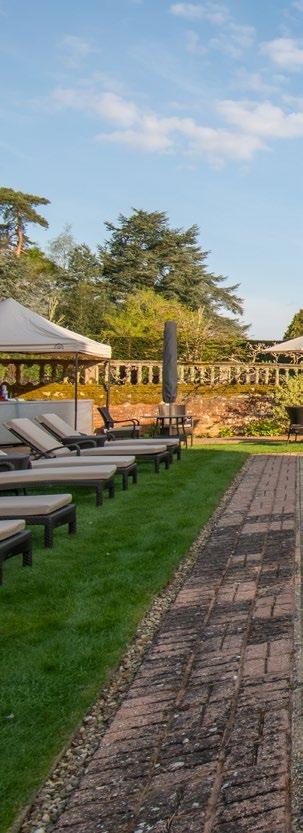
Plunging into a cool pool on a hot day is a surefire way to beat the blues.
Swimming is an all-round win for wellbeing, as it is beneficial to both body and mind. It is a cardio workout, strengthening muscles and improving flexibility while also easing stress and anxiety.
You don’t have to do lengths to feel the benefit. Simply bobbing around in the water in our indoor or outdoor pools can help you to relax.
“People are drawn to different elements of nature,” says Mita. “When you are floating in water, it’s almost like you’re returning to the womb again. It’s a place of safety and tranquillity. The rhythm of the movements when you’re swimming can also be meditative, helping you to relax.”


First thing in the morning and last thing at night, a surprising amount of us reach for our phones. It’s tempting to check emails, messages and socials but this can eat up hours.
Substitute screen time for a soak in the tub, a walk around the grounds or a long, leisurely meal in the dining room.
“We have so much stimulation,” says Mita. “We’re hyper connected and that’s not natural for human beings. Don’t feel guilty about taking a break. Leave your phone on silent or turn it off. Let people know that you’re not neglecting them, you’re just going to be unavailable for a window of time.”


To de-stress and unwind, visit the spa. Massage relieves aches and pains and leaves you feeling refreshed and revitalised. It can improve circulation, leaving you with clearer skin, and slows signs of ageing.
Combining massage with aromatherapy can help you reach a deeper state of relaxation as you engage your senses.
“Using all of our senses is like going to watch a live music concert,” says Mita. “All the instruments playing in harmony makes everything a lot richer and more vibrant. This multilayered experience boosts our joy.
“Essential oils have many benefits. Try lavender for a relaxing effect, citrus oils like lemon and orange for burst of sunshine, and peppermint, which is like a refreshing breeze.”

Mindfulness encourages you to pause and focus on the present moment. It can reduce stress, improve mental health and increase happiness.
“Science shows that we’re on autopilot 46.9% of the time,” says Mita.
“Half of our waking life is happening unconsciously. Mindfulness is grounding, as it takes you out of your thinking head and brings you more to life.
“If you set a big goal, say to meditate for 20 minutes, the likelihood is it's not going to work. Start small with five minutes. Go outside without your phone or headphones. Walk gently, notice the sounds, smells and sights. Engage your senses, focus on your breathing and be present.”


Walking boosts heart health, burns calories, builds stamina and releases happy hormones. You can see something new each season, from the bright blooms of mid-summer to changing leaves and busy wildlife as autumn takes hold. Explore your hotel’s surroundings and you could find a peaceful cove, hidden forest clearing or cosy country pub.
“Being in a green space for just 30 minutes a week can reduce depression and anxiety by 7%,” says Mita. “We are very closely linked to nature as humans, but we've lost that connection because of our modern life. Even for just 10 minutes a day, going out in nature is a must. It is like plugging into a giant natural charger for humans.”


When was the last time you felt truly well-rested? “Rest is really important because it’s not just the absence of activity,” says Mita. “It allows us to process experiences, consolidate memories, ignite our creativity and just simply be.
“Without rest, we start to become more prone to stress and we're not able to fully enjoy life. If we think of a garden, we can't expect a constant harvest without giving the soil any time to replenish. Rest is the foundation for where our bodies and minds are rebuilding and recharging. It allows us to flourish and blossom.”
All You Need Is Rest by Mita Mistry (Summersdale, £8.99) is out now. mitamistry.co.uk

Sussex’s own Bluebell Railway is hosting a summer-long programme of special events to celebrate 200 years of Britain’s railways

The world’s first public railway opened in north-east England on 27 September 1825 to transport coal from inland collieries to the coast. From humble beginnings, the Stockton & Darlington Railway sparked ideas for a transport system that would eventually connect people and places all over the world.
This year sees the 200th anniversary of the modern railway, and to celebrate, Railway 200 will be arriving at stations and other venues across the UK. There will be a special exhibition train; community and heritage events; activities; tourist trails and lots more going on to celebrate rail’s remarkable past, present and future.
Bluebell Railway, just 15 minutes from Ashdown Park Hotel, has been transporting passengers through glorious Sussex scenery, including swathes of springtime bluebells, since 1960. Its fine collection of vintage steam locomotives and carriages run for 11 miles between Sheffield Park and East Grinstead, with stops at Horsted Keynes and Kingscote. Each station showcases a different era, from Victorian times to the 1950s, and an All Day Rover ticket allows visitors to hop on and off as much as they like.
“Bluebell Railway is the oldest standard gauge, passenger-service running heritage railway in the country,” says marketing and communications manager Ruth Rowatt.
“Because it started so early, it has amassed one of the finest collections of heritage steam engines and rolling stock. Fantastic things, like the most
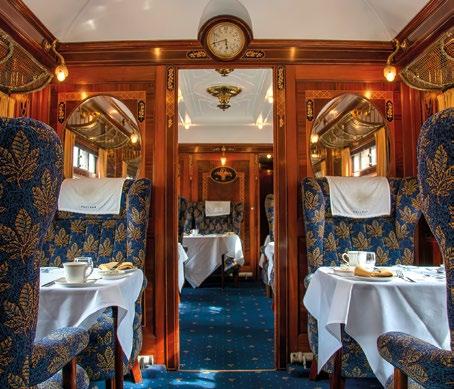
beautiful 1920s Golden Arrow Pullman dining and steam locomotives and an observation carriage with glass all the way around, so you can see the engine.”
For Railway 200, Bluebell Railway is hosting a summer-long program of special events including train-driving experiences, brake van rides and silverservice fine dining.
“Our Golden Arrow train and fine dining Pullman set is just fabulous,” says Ruth. “Think 1920s luxury, Poirot and the Orient Express. The marquetry on the walls, comfortable, big, upholstered seats, tablecloths and lamps. Recently overhauled, Car 54 is the first of its kind to be wheelchair accessible. You can dine for an absolute premium on the Orient Express but you can come and do it here for a fraction of the price.”
Two stations will host special exhibitions, linked by a steam-hauled shuttle service. Rail Past at Sheffield Park celebrates Britain’s railway history while Horsted Keynes station looks
“OUR GOLDEN ARROW TRAIN AND PULLMAN IS FABULOUS. THINK 1920S LUXURY, POIROT AND THE ORIENT EXPRESS”
ahead with Rail Present and Future.
“We will be launching a new digital guide, which people will be able to download on to their phones to enrich their visit,” says Ruth. “A preserved railway is living history, so you can't stick information labels next to everything, as some things are always on the move. The digital guide will allow visitors to find out more when they are standing near to something. It can be used on the trains, too.
“Of course, you can talk to our passionate and enthusiastic volunteers. From locomotive drivers and signalmen to station staff and the infrastructure department, they keep everything running.”
Events will run until early September, culminating in a Diesel Gala.
“A modern-day train just doesn’t compare to the theatre and power of steam,” says Ruth. “You can enjoy the tranquillity of the countryside, hopping on and off at the stations. You can step up and have your photo taken with the driver where you can feel the heat off the engine. With all the smells, sights and sounds, it’s exhilarating, fascinating and so cool.”
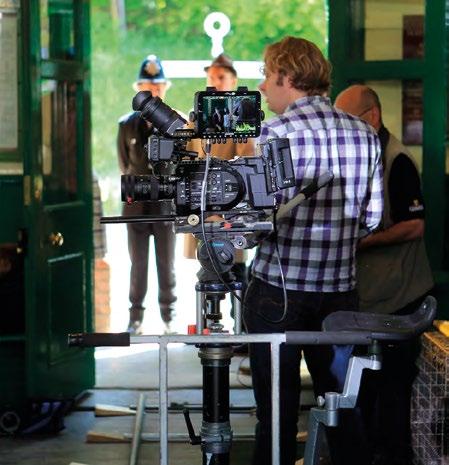
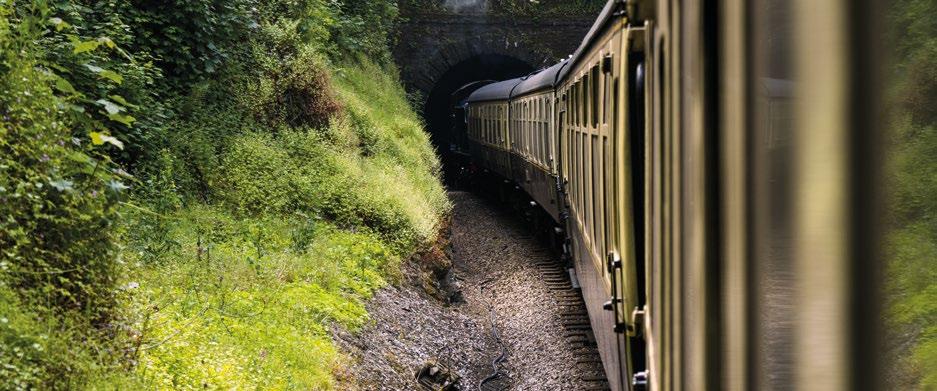
Sheffield Park station has been restored to reflect the Brighton era of the 1880s – think steam locomotives and railway romance. It is home to the railway’s museum, which includes the interactive SteamWorks experience, and The Bluebell Railway Gift Shop.
The station can be seen in the cover photo for Elton John’s 1970 album Tumbleweed Connection

Restored with a 1930s theme, Horsted Keynes was once a large junction station. It has been used as filming location for Downton Abbey, The Woman in Black, Poirot, Muppets Most Wanted and, most recently, SAS Rogue Heroes
It has an award-winning carriage works viewing gallery and the Elephant Van play carriage for little ones. The King George V Buffet is a charming waiting room serving tea, coffee and snacks.
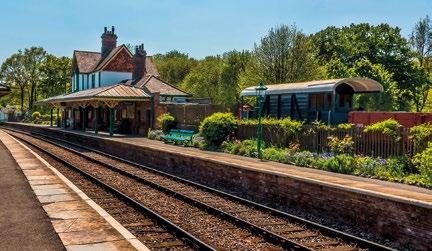
1950s-themed Kingscote Station is the perfect spot to enjoy the slower pace of yesteryear. A fascinating heritage trail includes the Station Master’s Garden, waiting rooms still in their original design and the station forecourt with its elegant 1882 facade. Among the vehicles on display is a 1920s banana van, which was steam-heated and insulated to move bananas imported from the Caribbean.
Yesteryear meets modern day at East Grinstead, where Bluebell Railway connects with the National Rail station. Visitors can come by mainline train to East Grinstead and walk a minute along the path to The Bluebell Railway. Passengers can watch as locomotives uncouple and run round to the other end of the train to rejoin the carriages for the return journey.


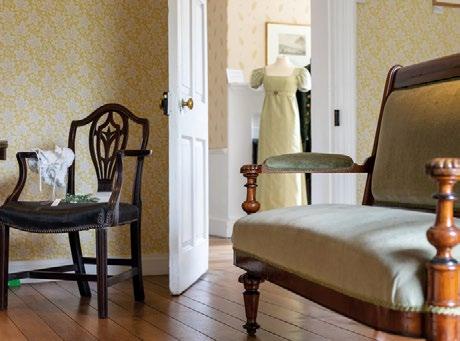


Exceptional privileges await members of Elite’s exclusive members’ club
Enter a finely crafted world of culinary adventures, celebratory gifts, gourmet escapes, restorative spa and wellness days, golf days, member-only invitations and exclusive events by becoming a member of Elite Diners. An annual fee of just £245 secures amazing benefits worth thousands of pounds, including discounts on food and accommodation, spa access and golf passes*.
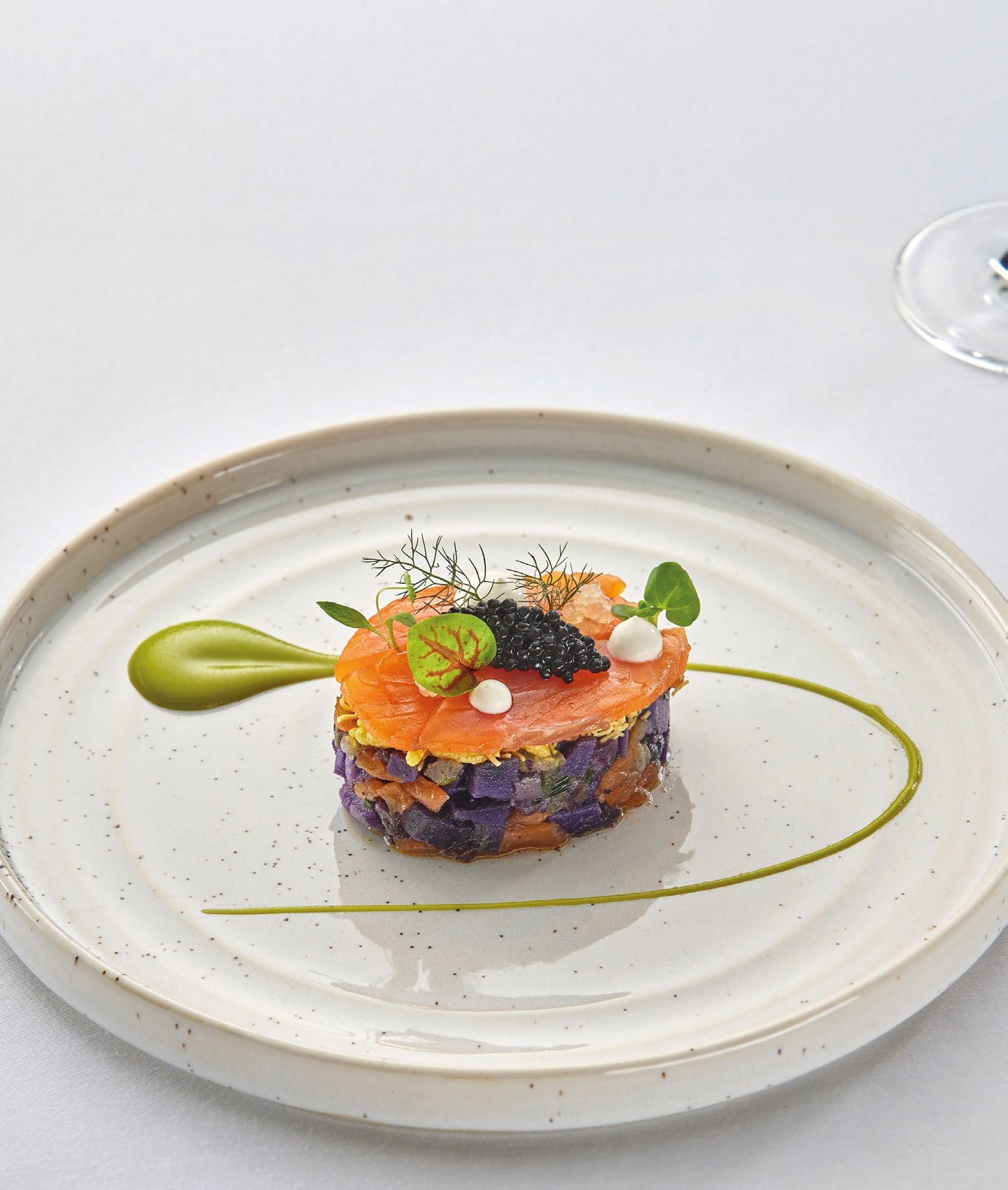
“Being part of this club is like having the keys to the hotel and makes every visit just that little bit extra special”
Mrs L Rowe, Elite Diners member

Elite Hotels care deeply about the environment. Here are six initiatives happening right now
All our hotels feature electric vehicle charging points to encourage guests driving EVs, while our concierge team now have electric vehicles to use when transporting guests across our estates.

Our estate teams use peat-free planting compost, organic fertilisers, recyclable plant pots, and plant-based weedkillers. They re-use wood from pallets, use water butts to recycle water and encourage wildlife through rewilding, leaving fallen trees and creating bug hotels.
All our bathrooms feature Molton Brown dispensers instead of 30/50ml bottles, displacing 1039kg of plastic, and reducing use by 60 per cent. Also, Molton Brown has an ethos to create products in an environmentally friendly way.
Many of our drinks are locally sourced, including Kingsdown Presses (Kent), Folkington Juices (East Sussex), Longman beers and Ditchling Toffee Vodka (East Sussex), Mayfield Gin, Andwell Brewery beers (Hook), Nyetimber wines (Kent), Bluebell Vineyards (East Sussex), and Kingscote Vineyard (West Sussex).
The food suppliers we use have fully sustainable credentials including Tablehurst Farm beefburgers, locally and sustainably caught seafood from MCB Seafoods, fruit and veg from Watt’s Farm, Hampshire trout from Direct Seafoods and milk from West Horsley Dairy.
In our laundries we ensure to use lower-temperature detergents, which are projected to reduce water and electricity consumption by 203,979 KwH pa. It will reduce wash programme duration, improve washing performance and operational efficiency.











